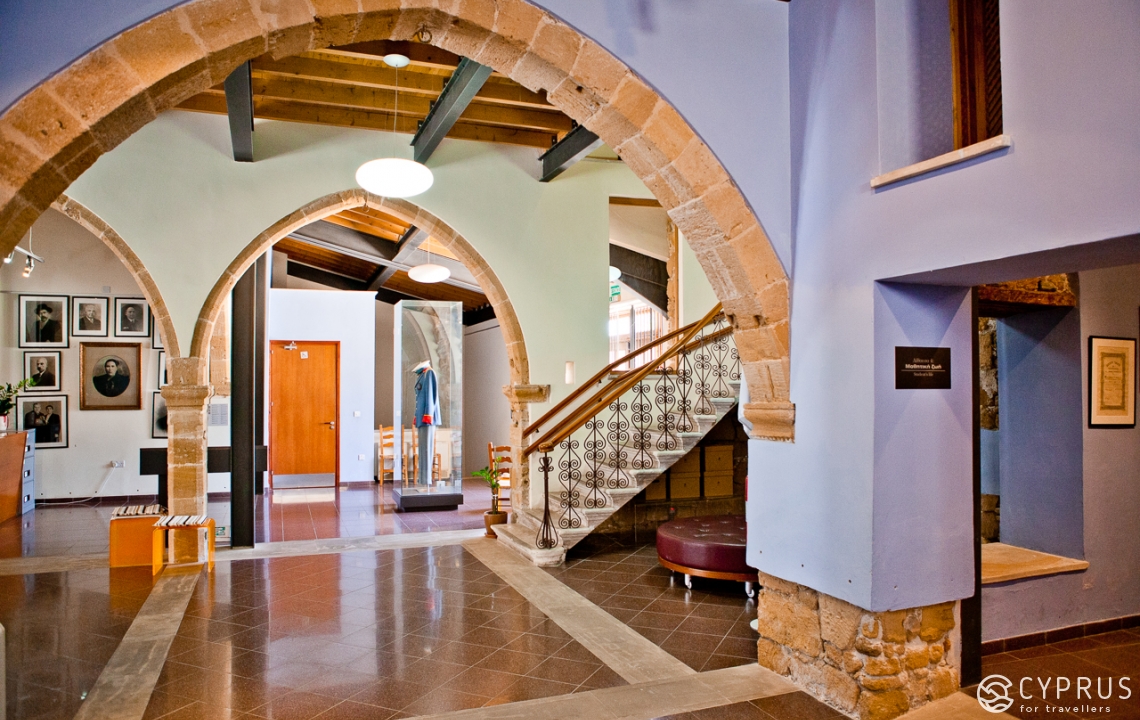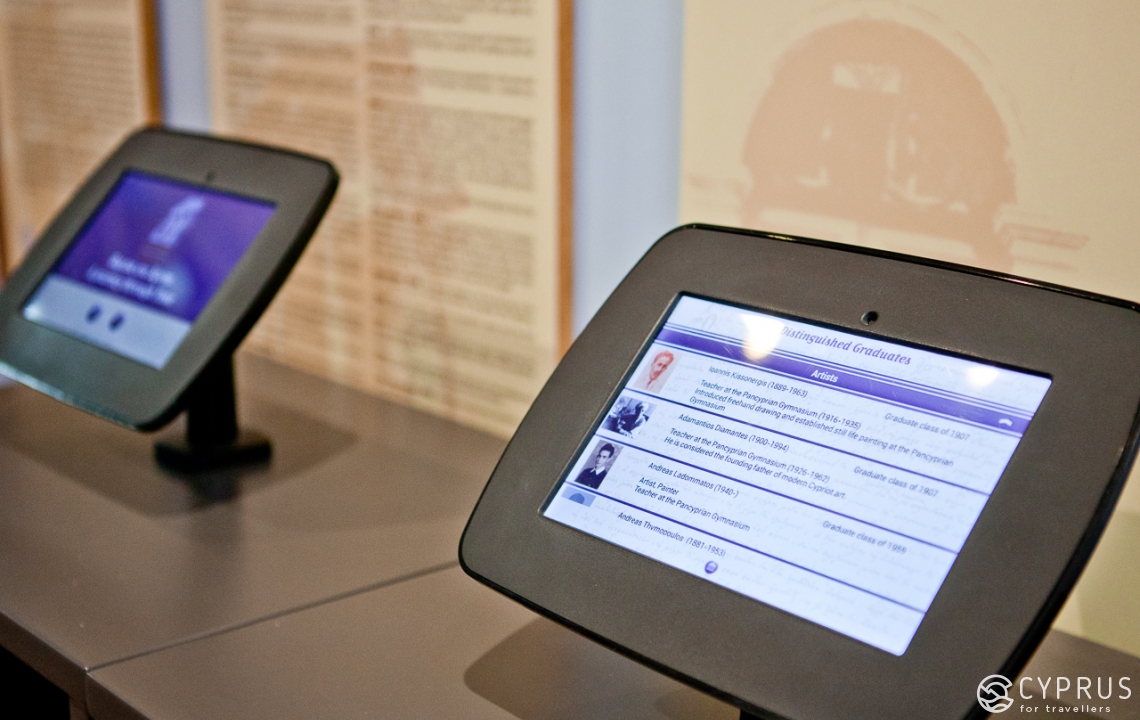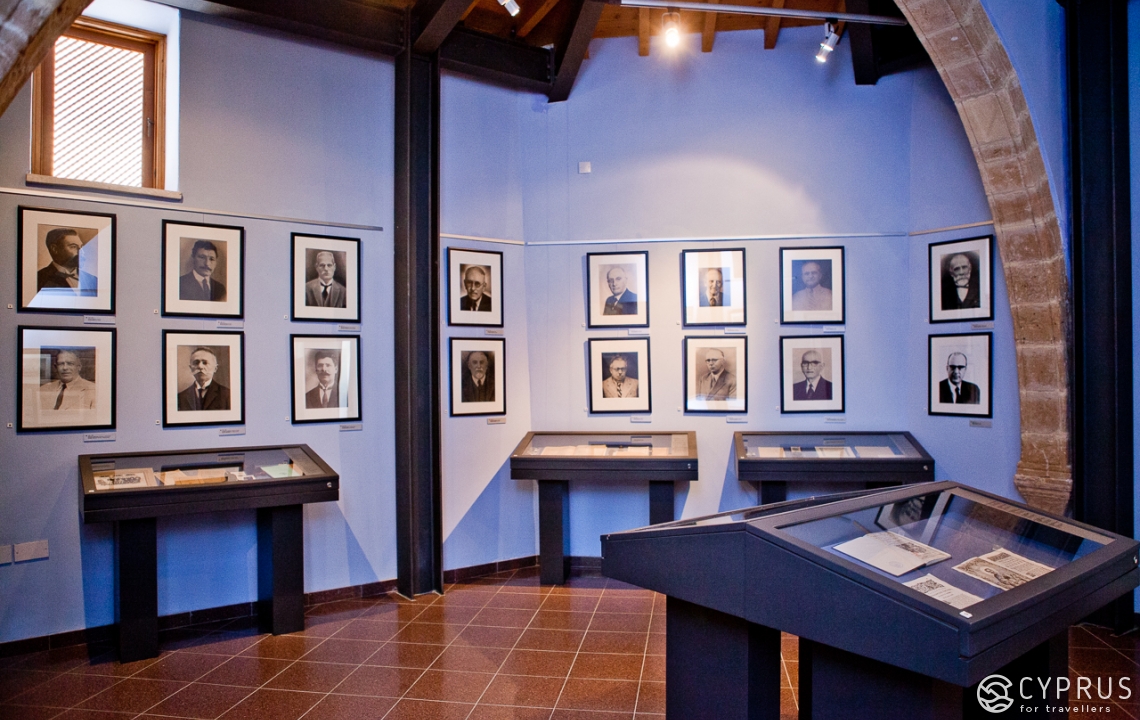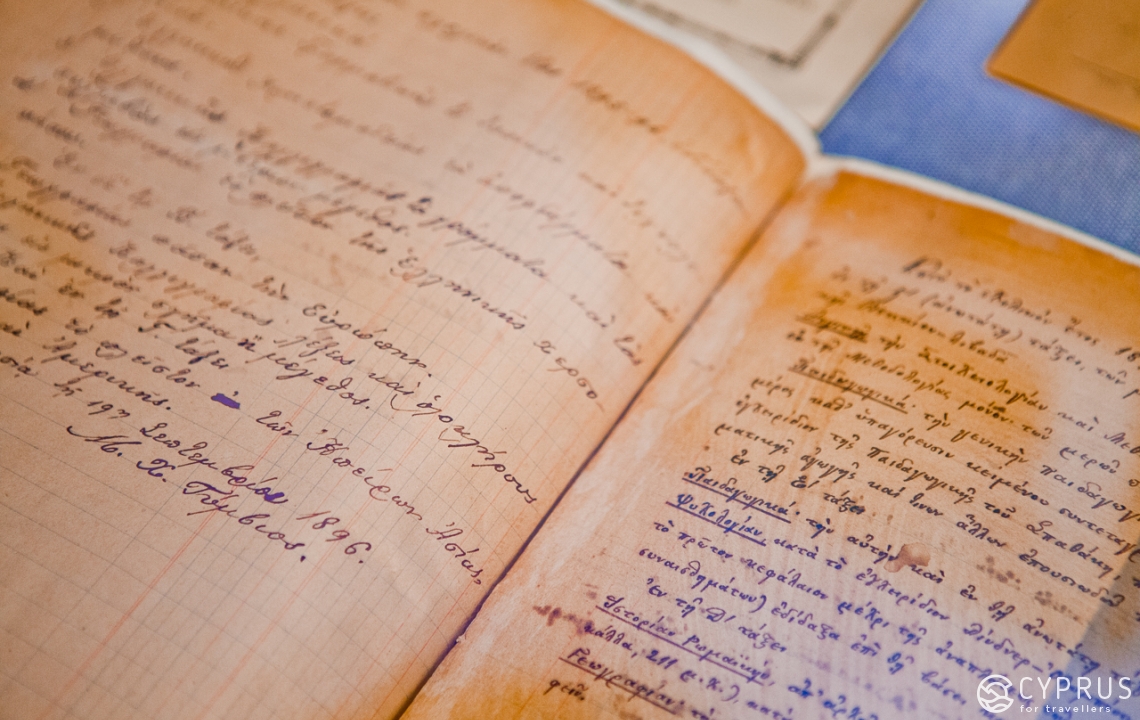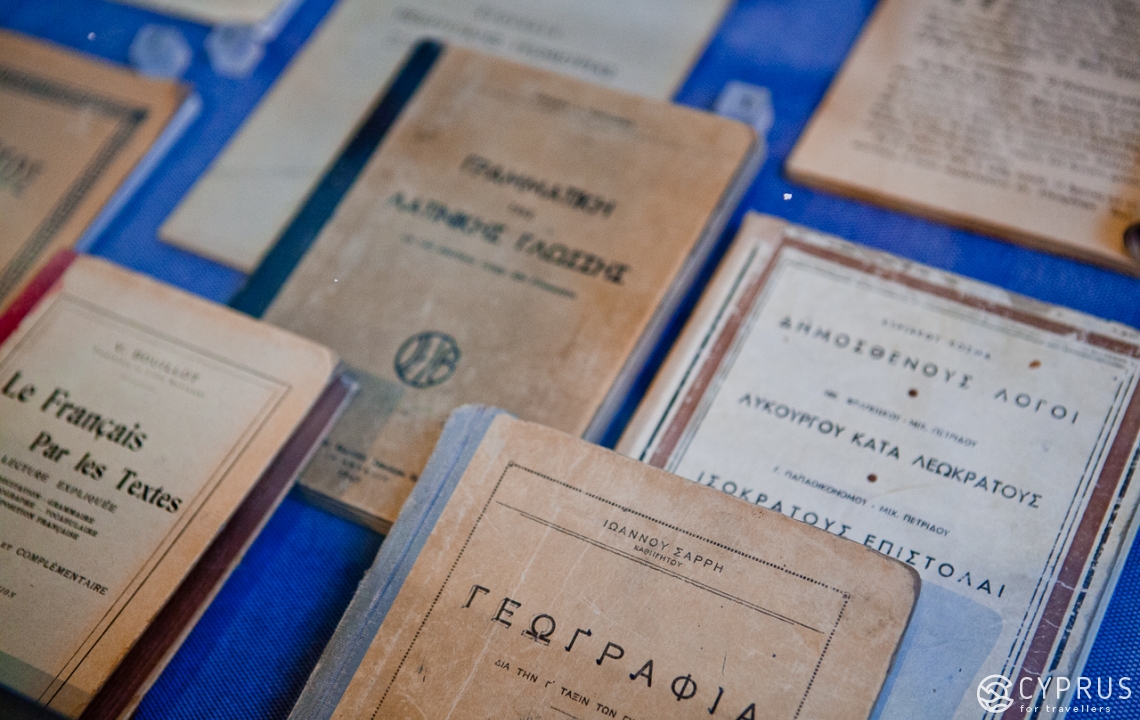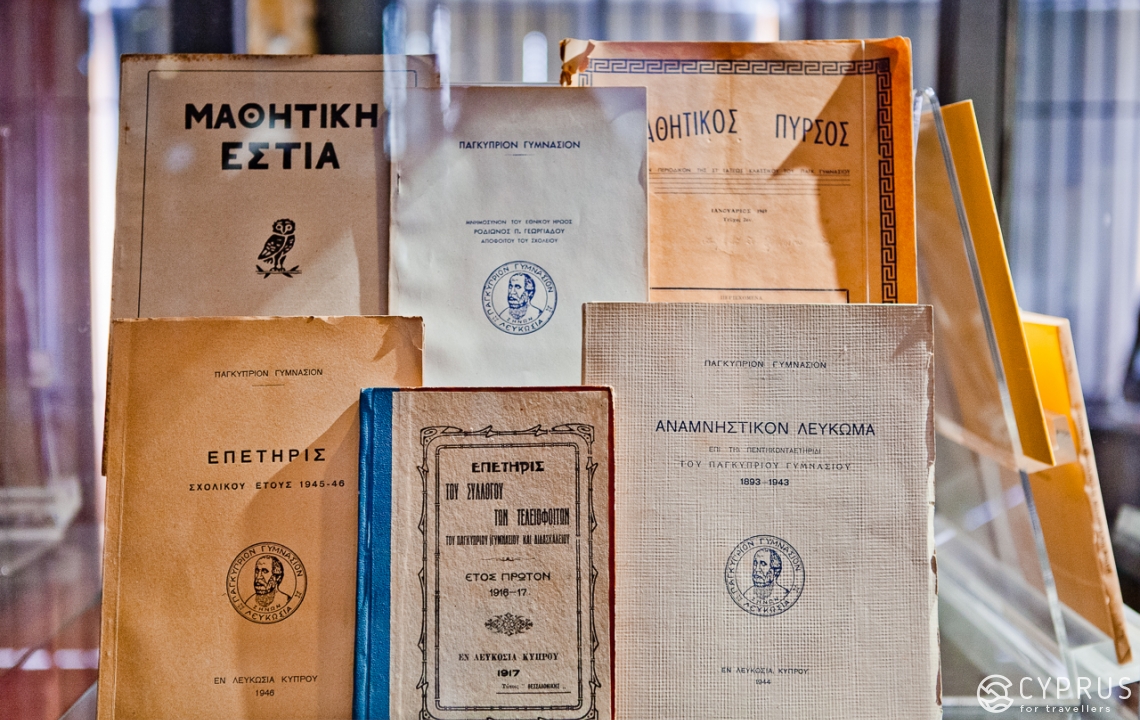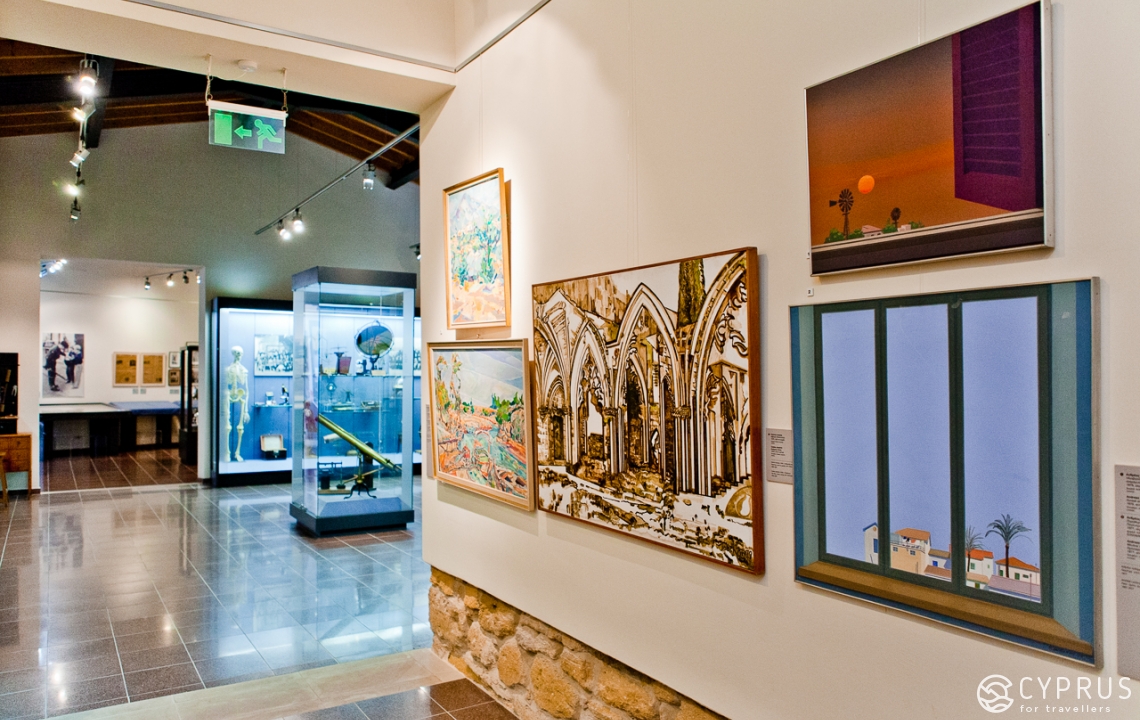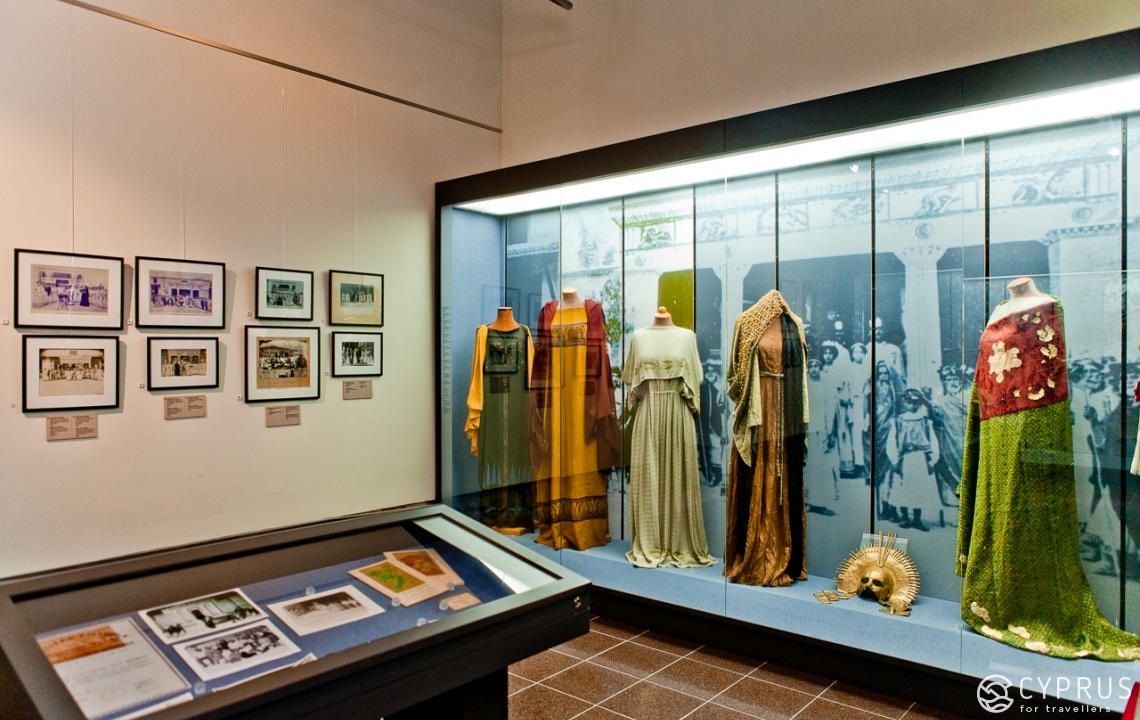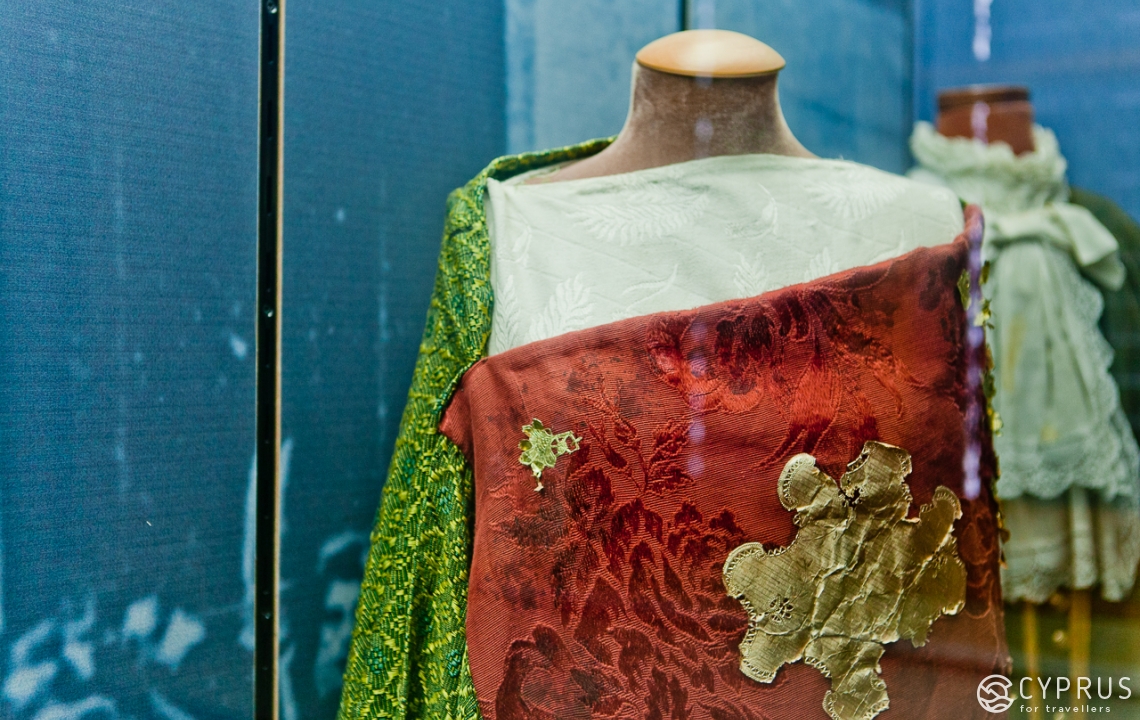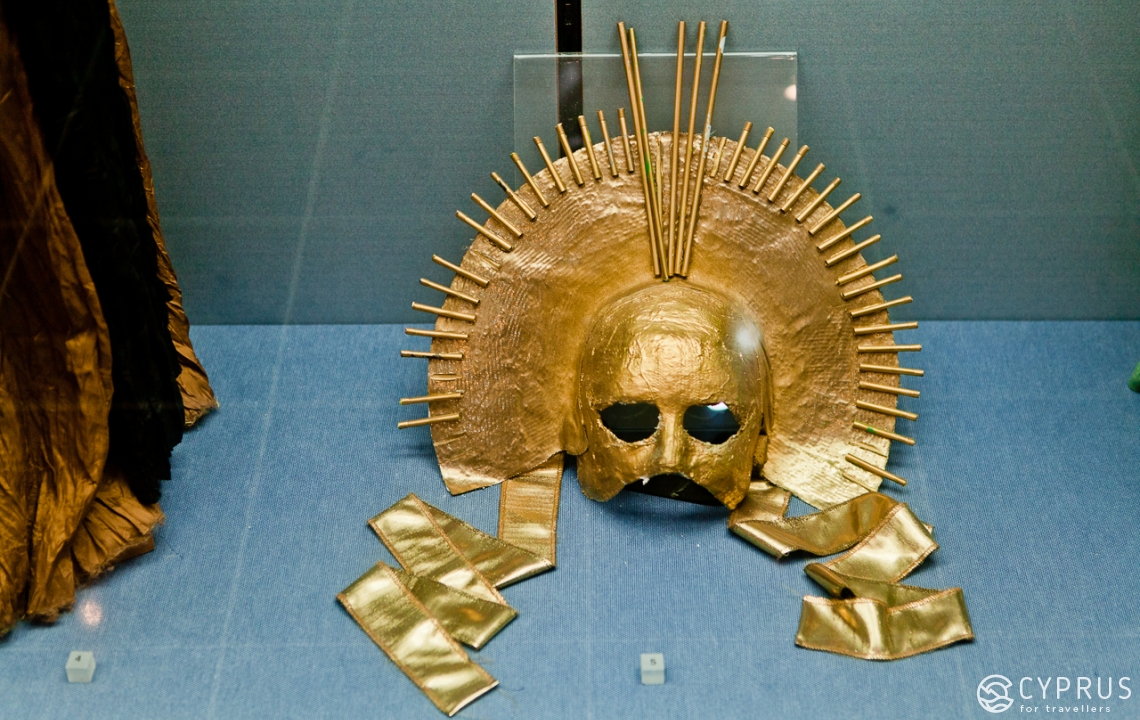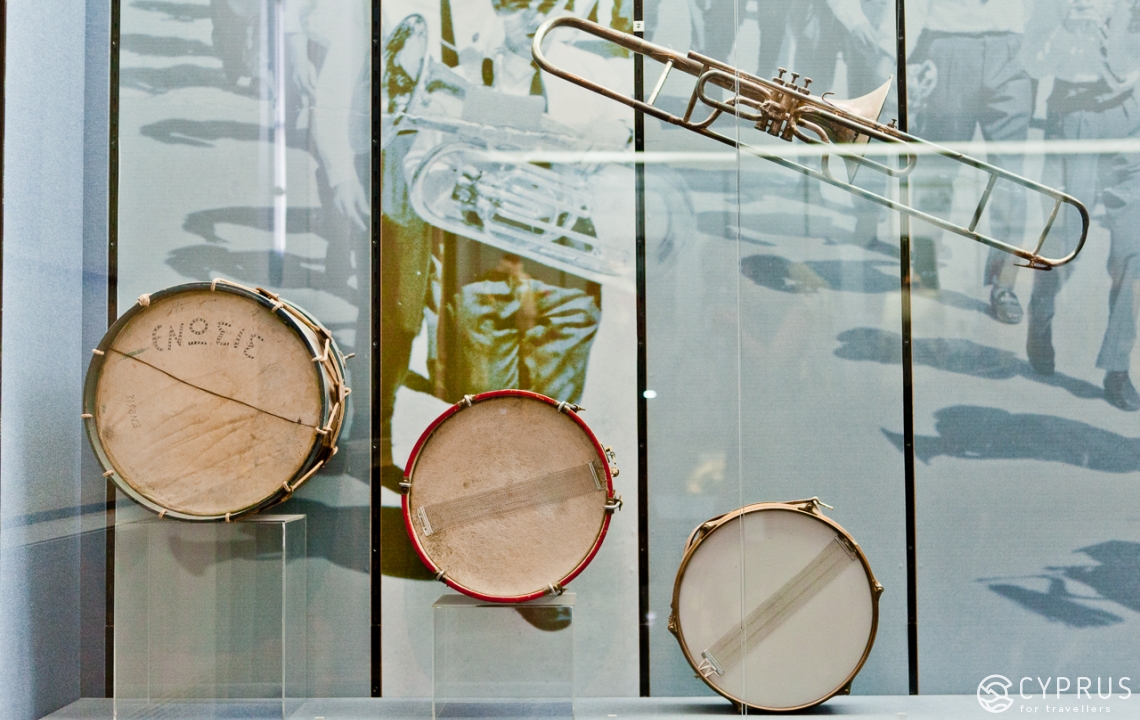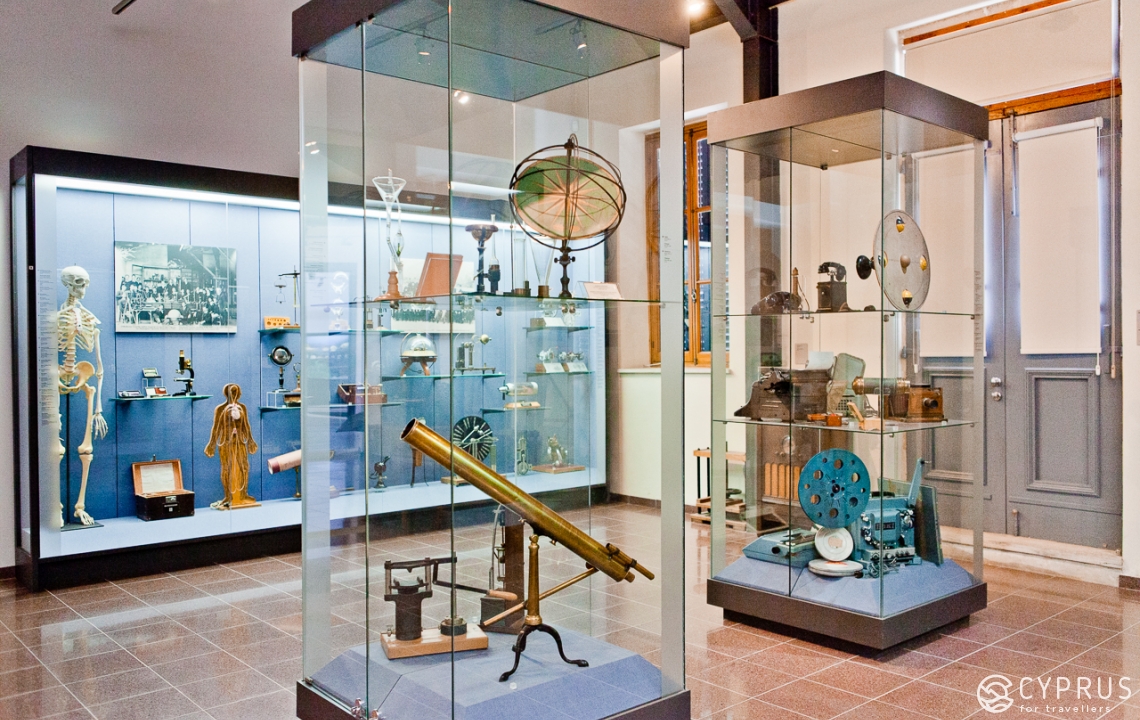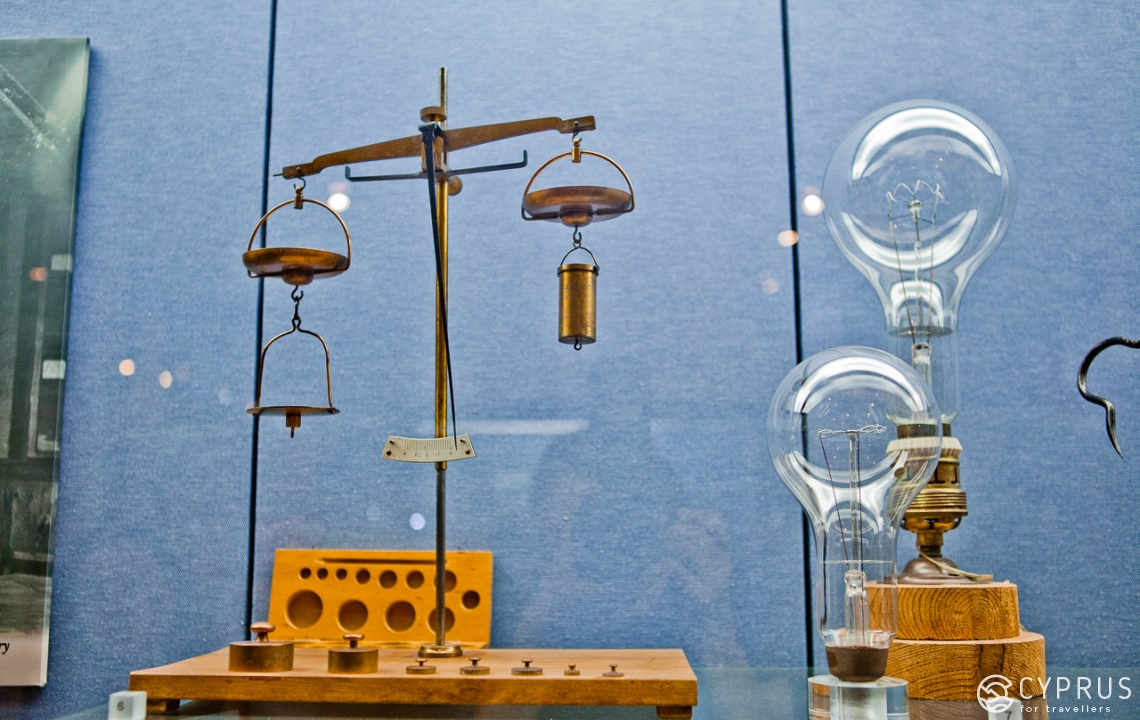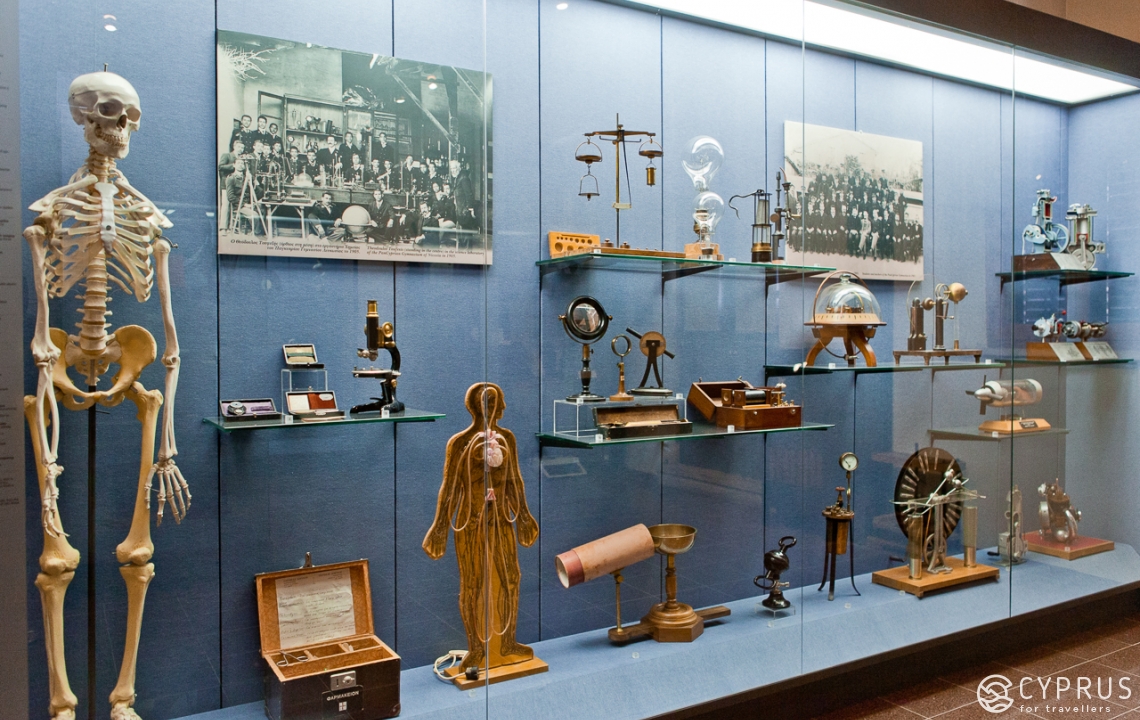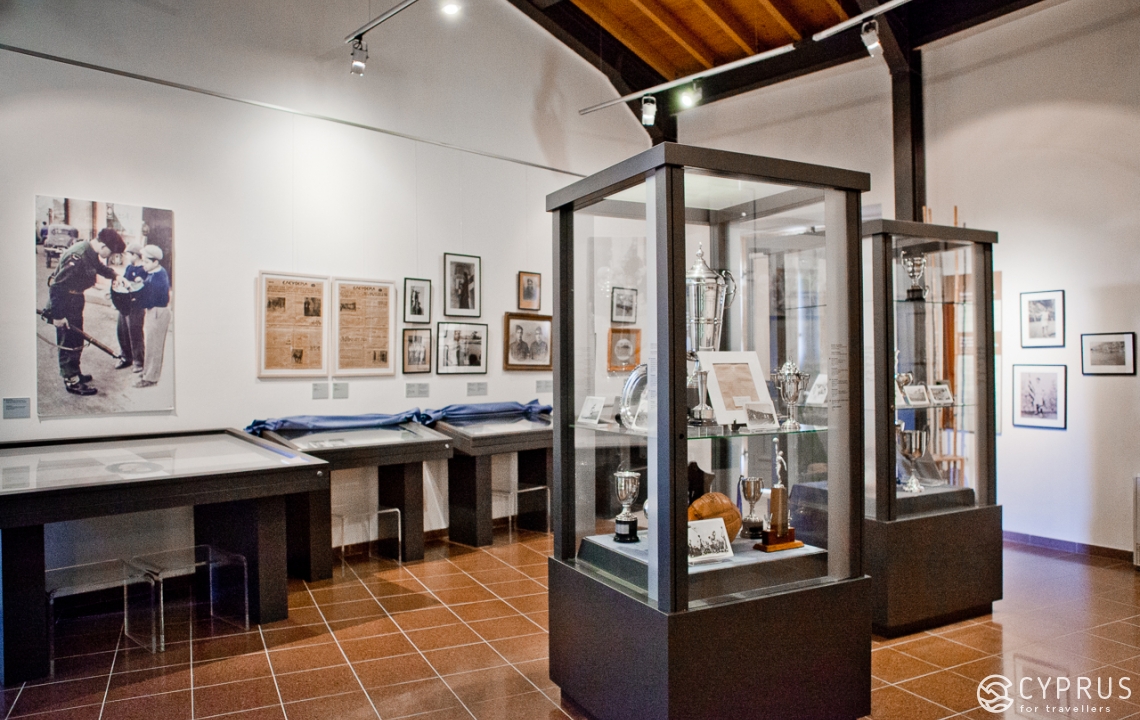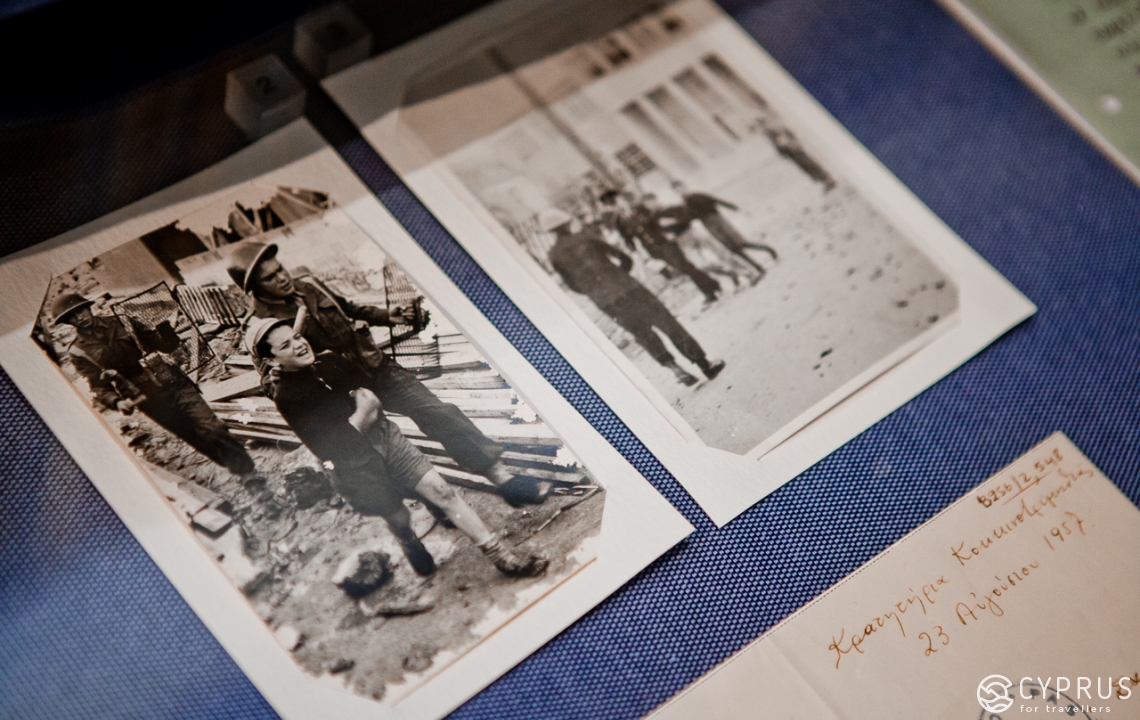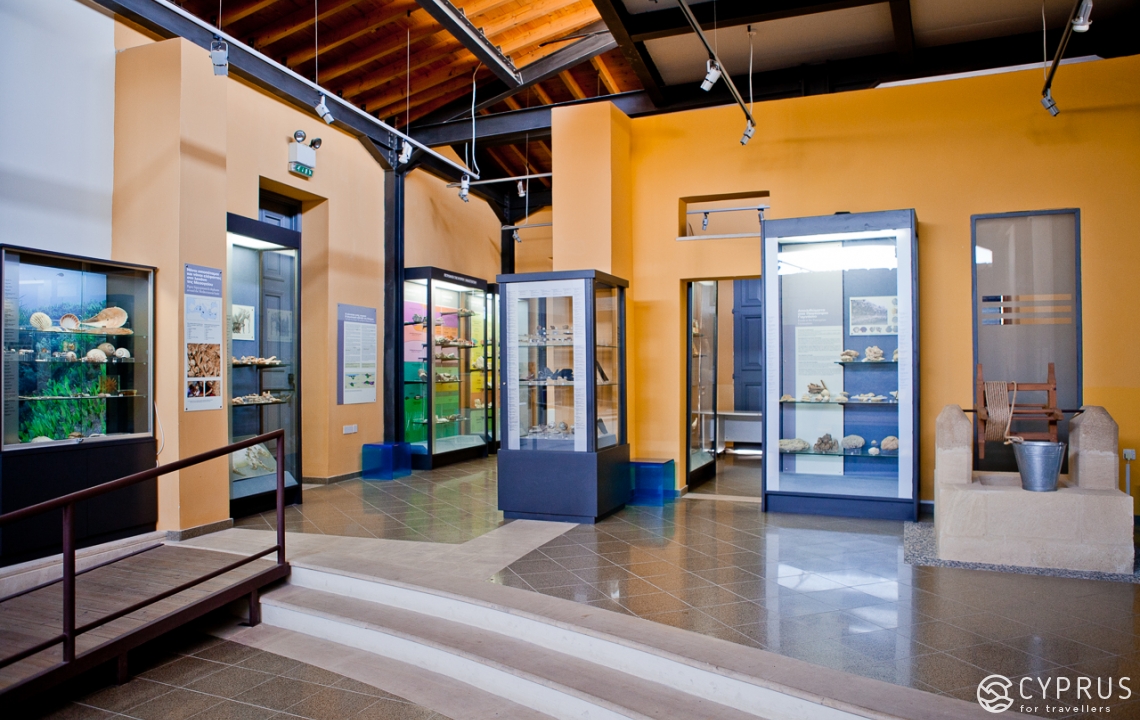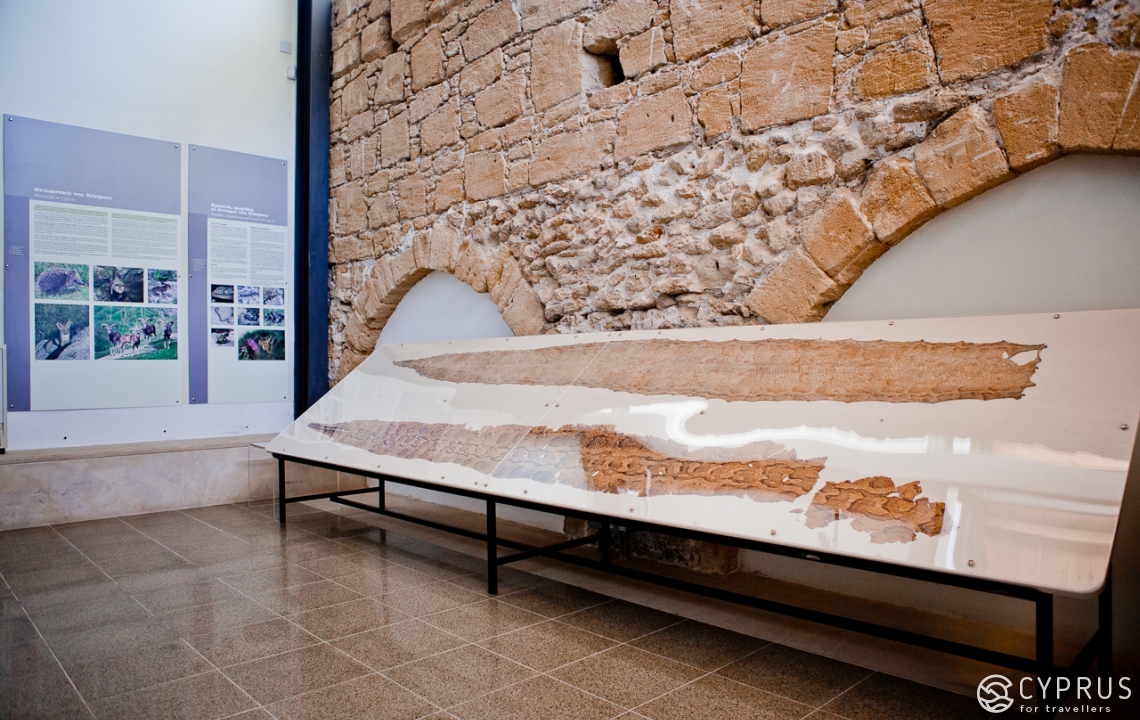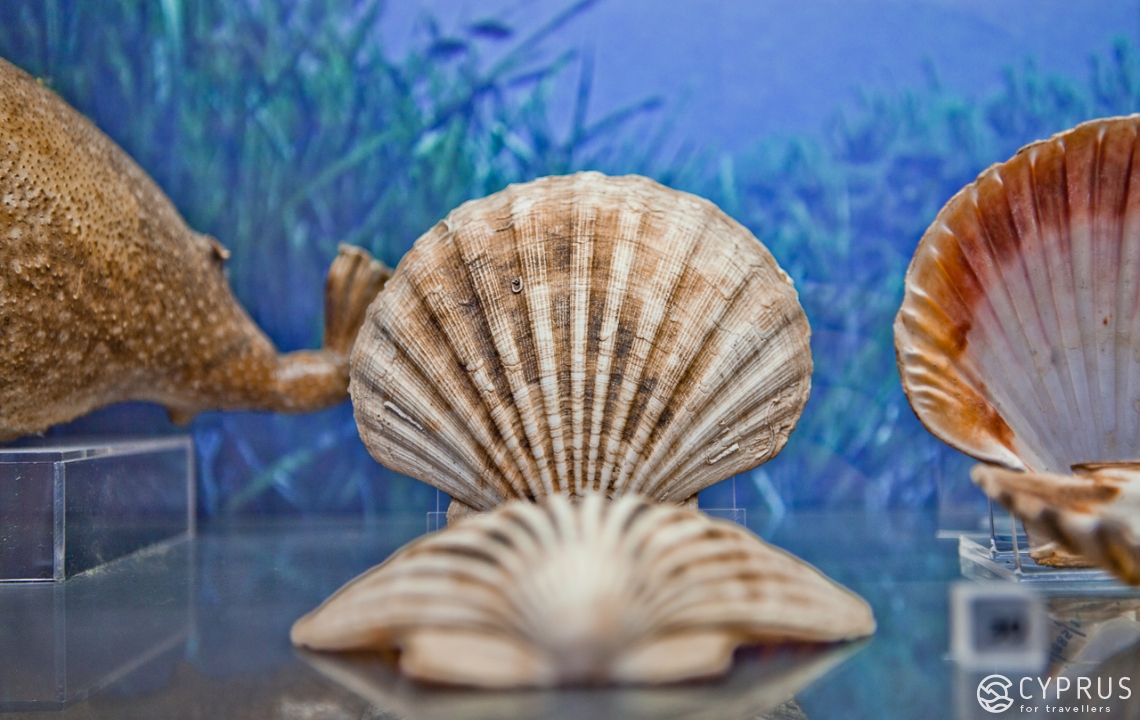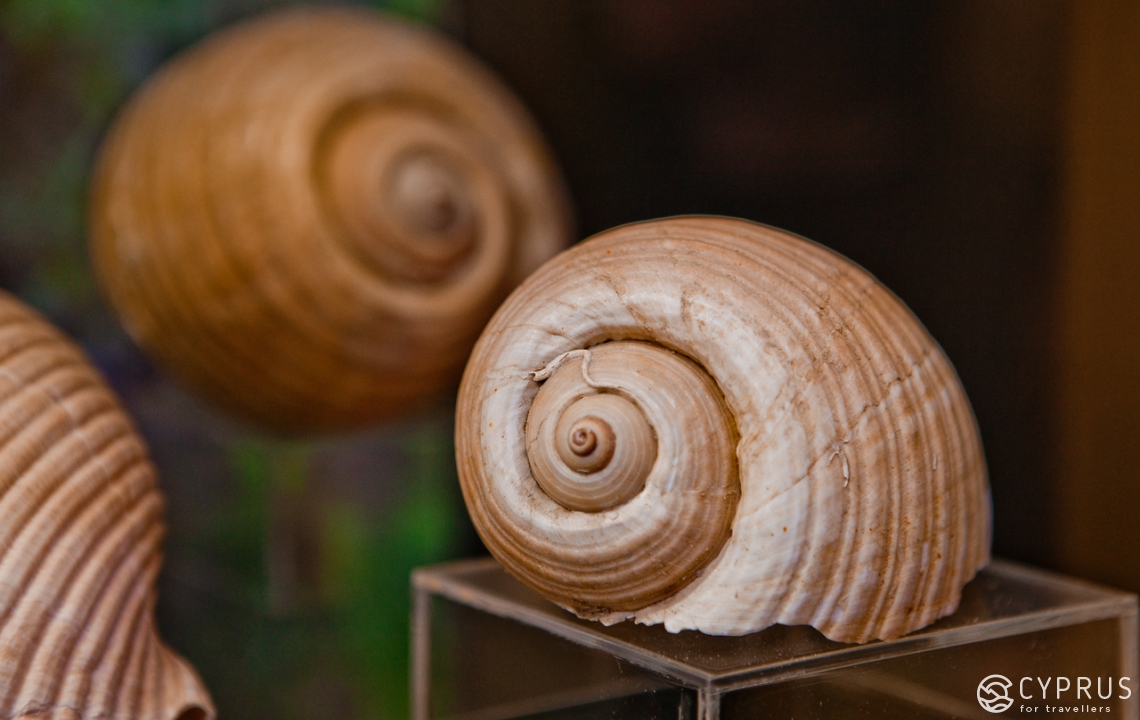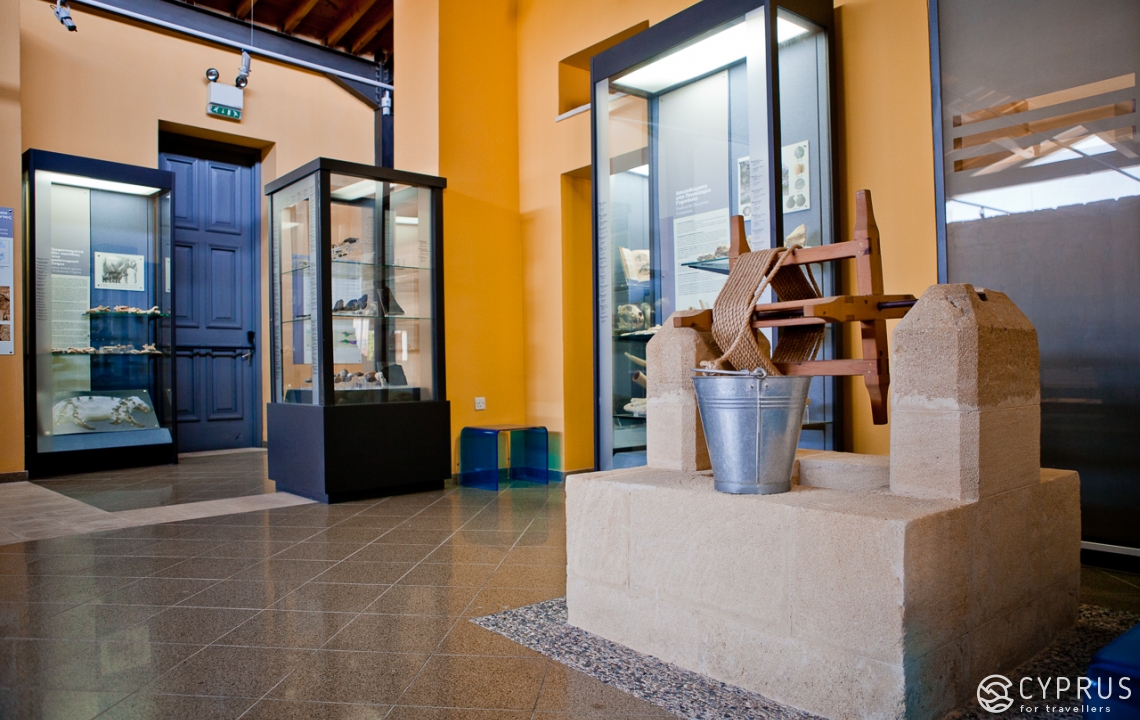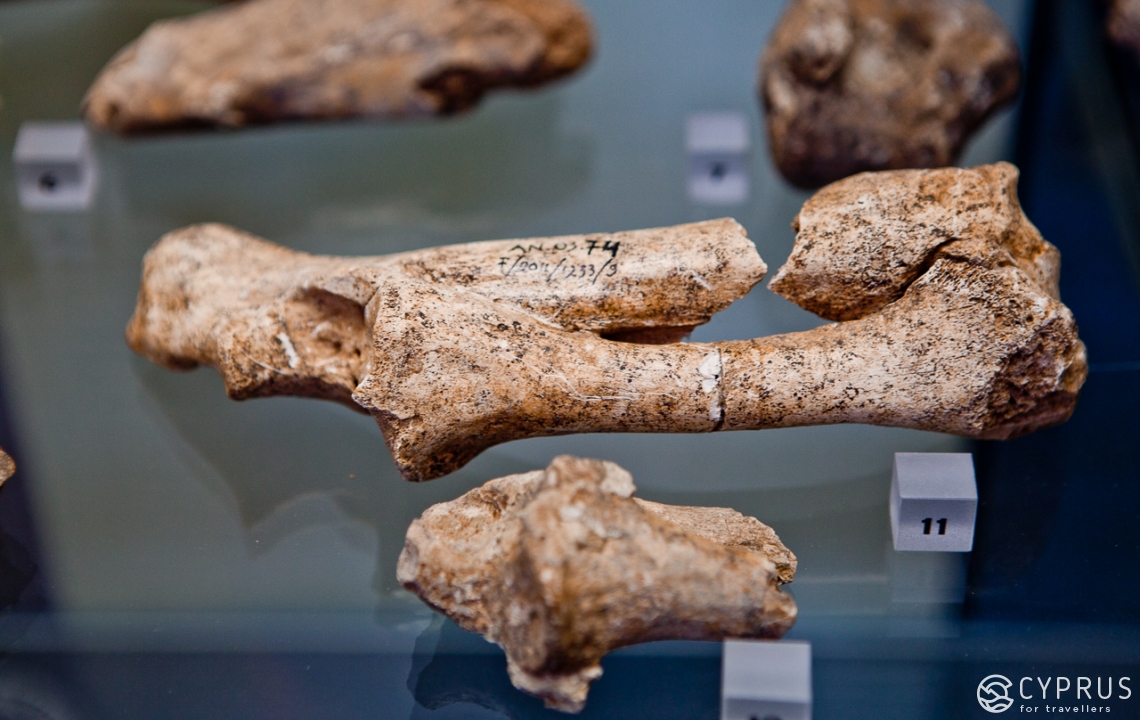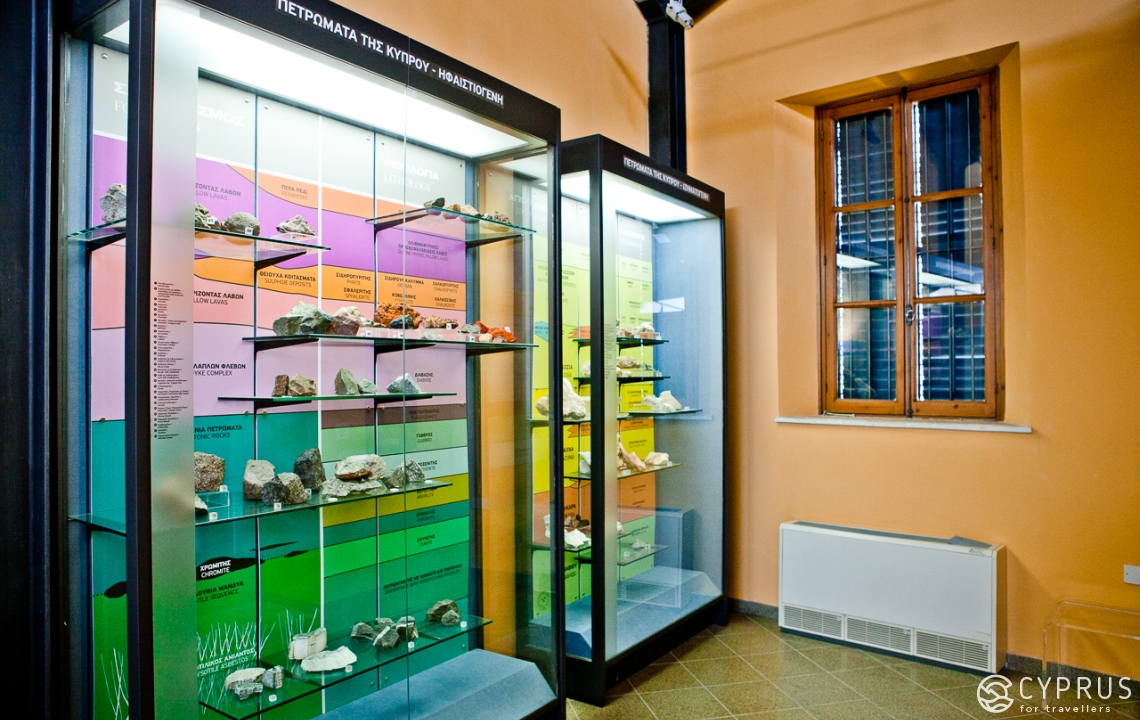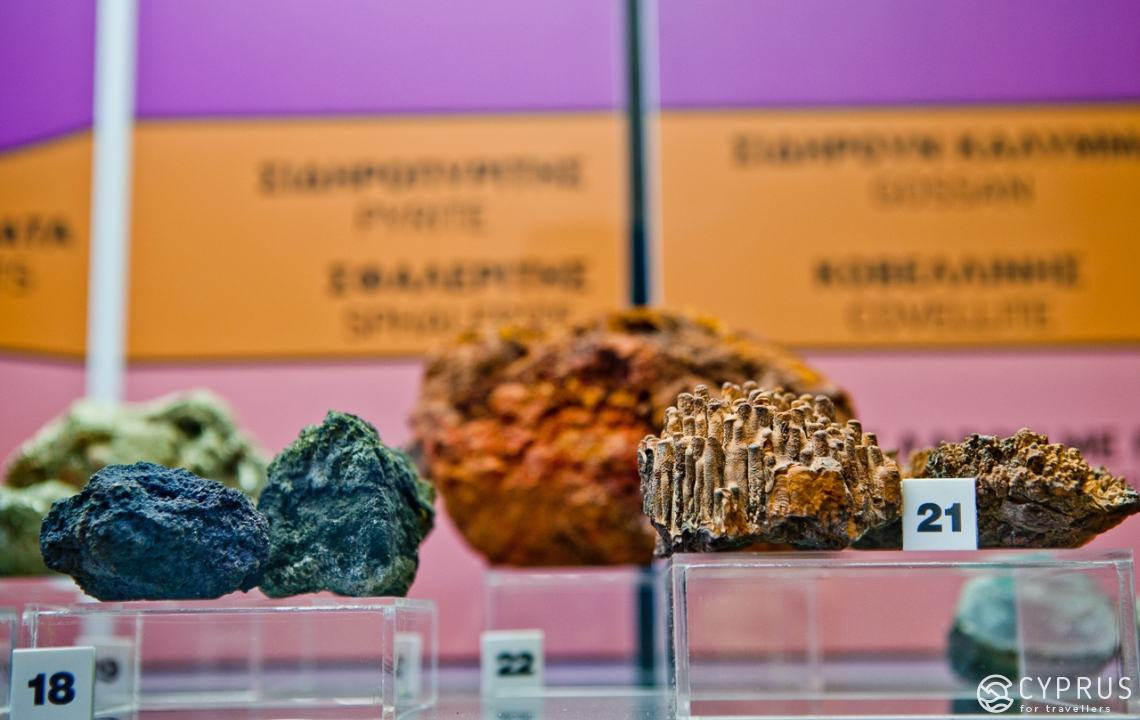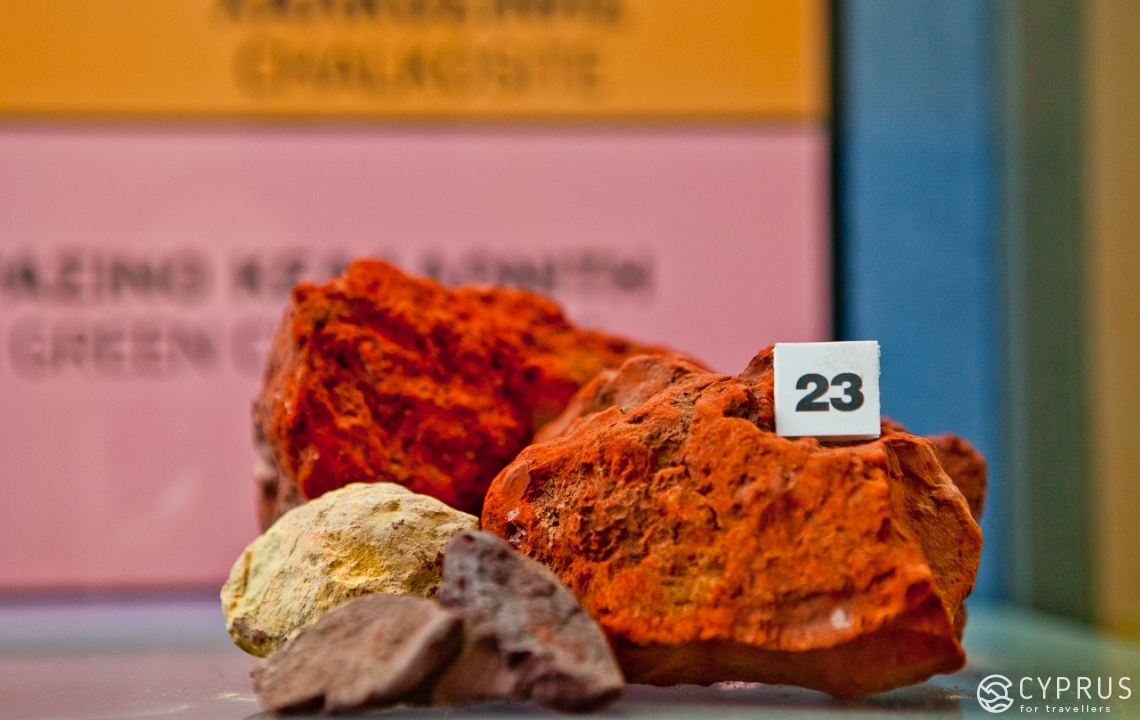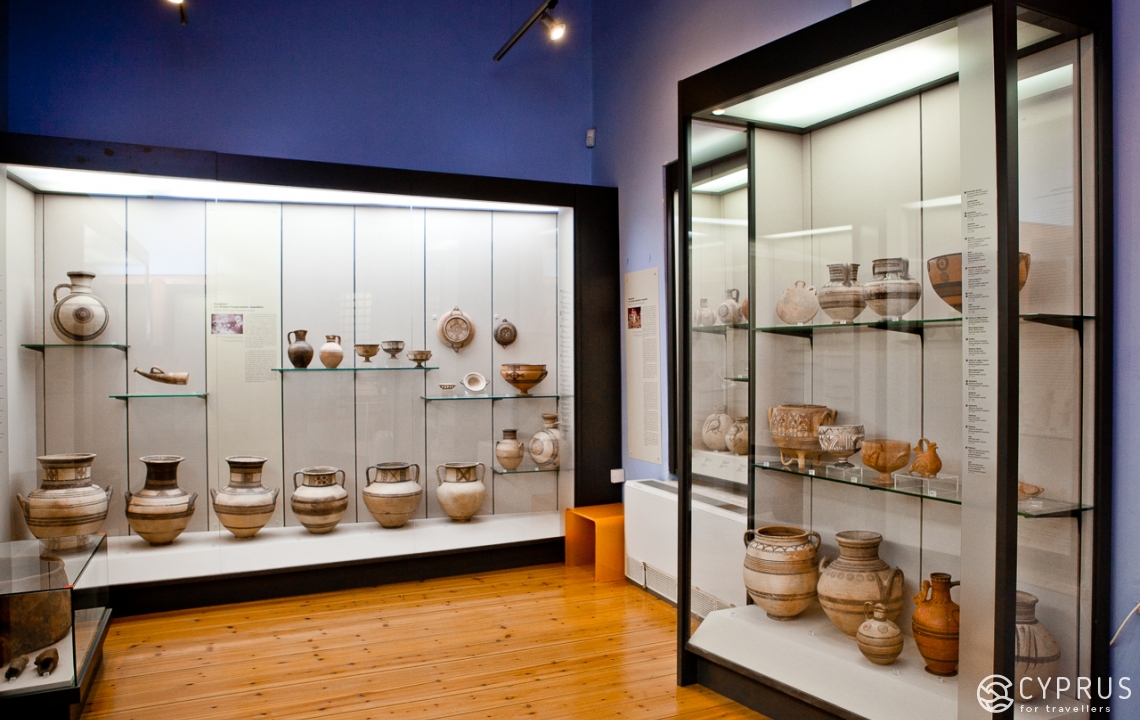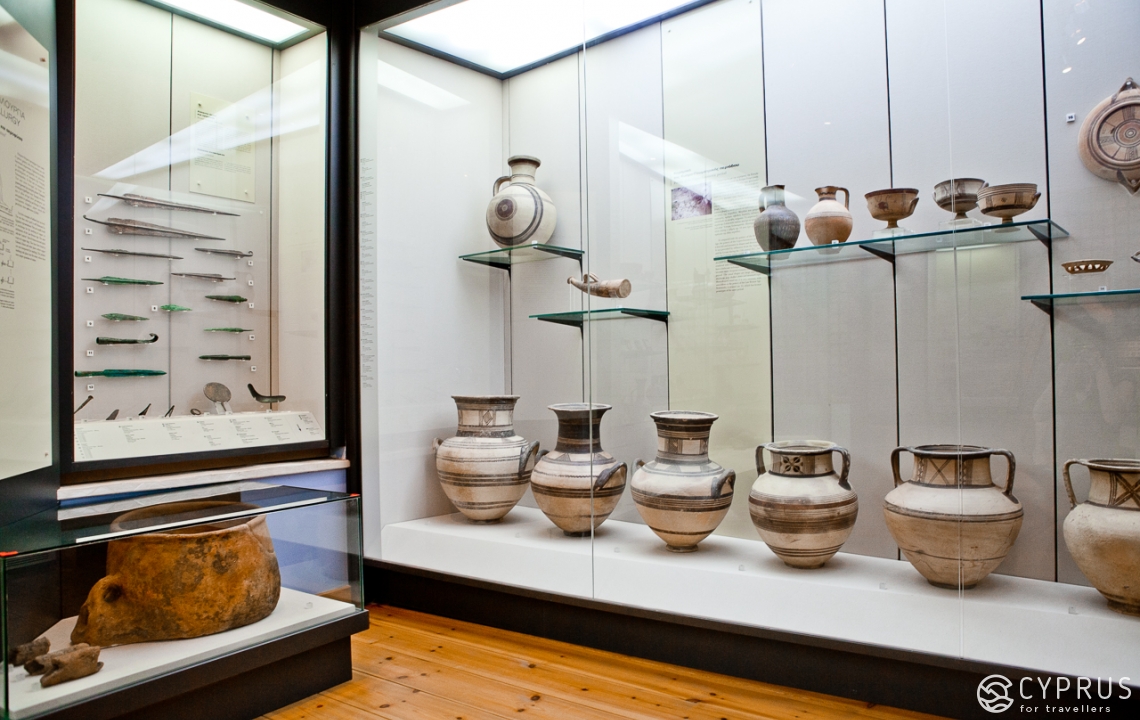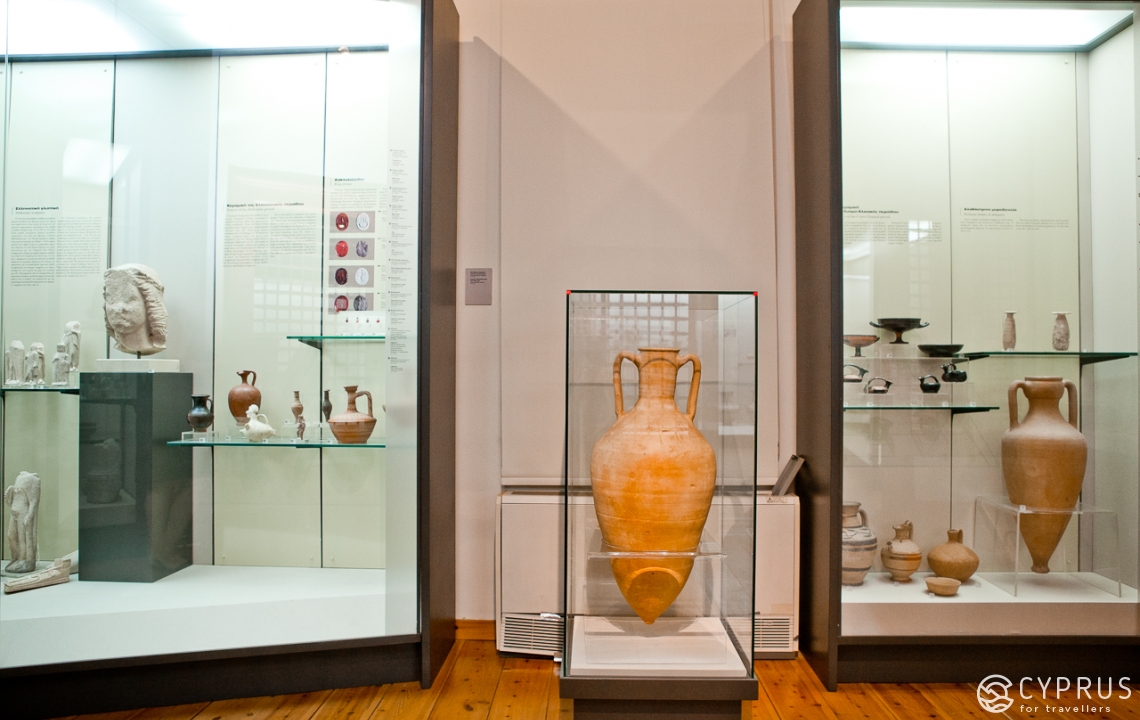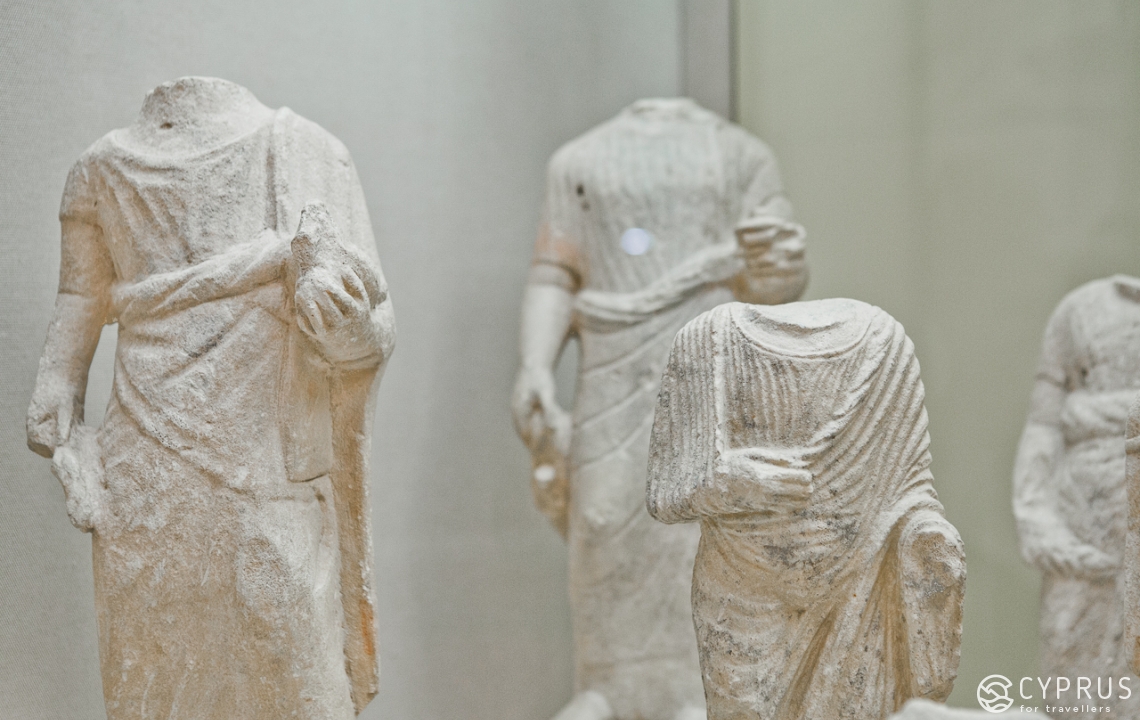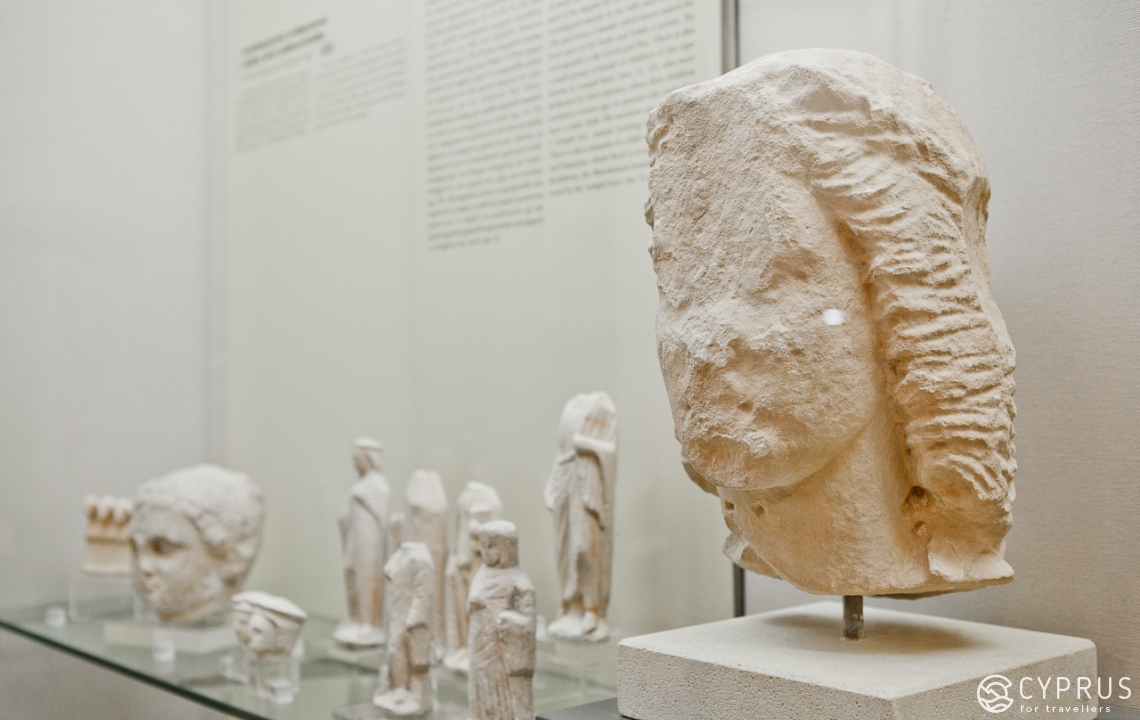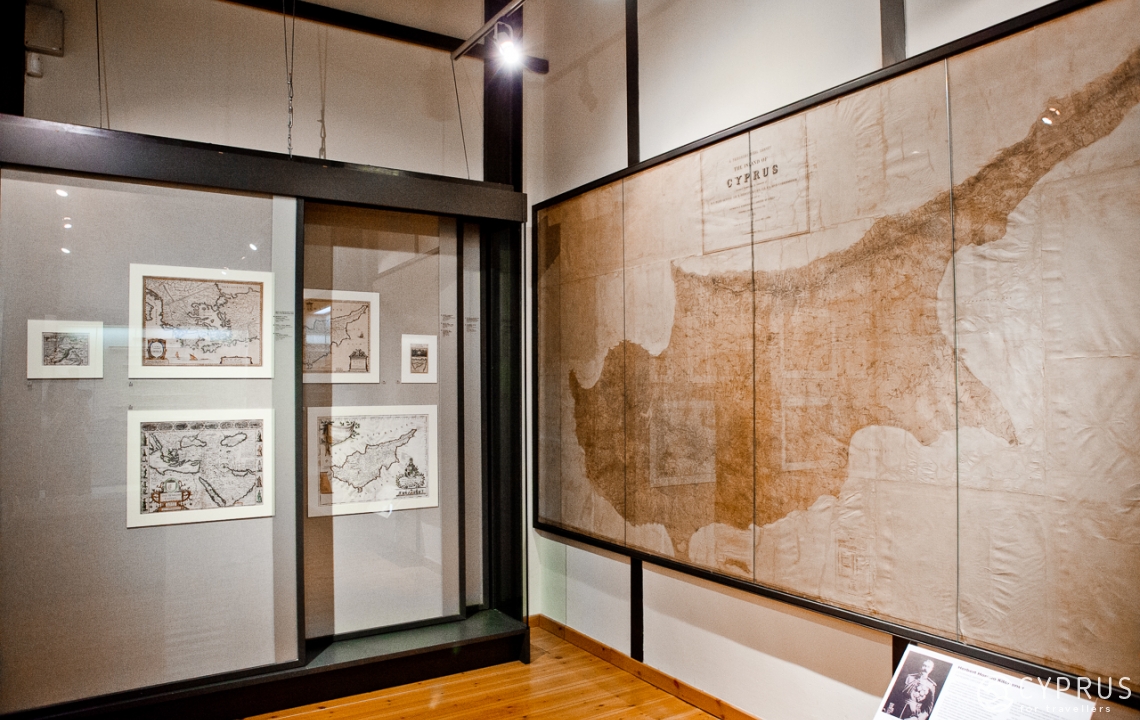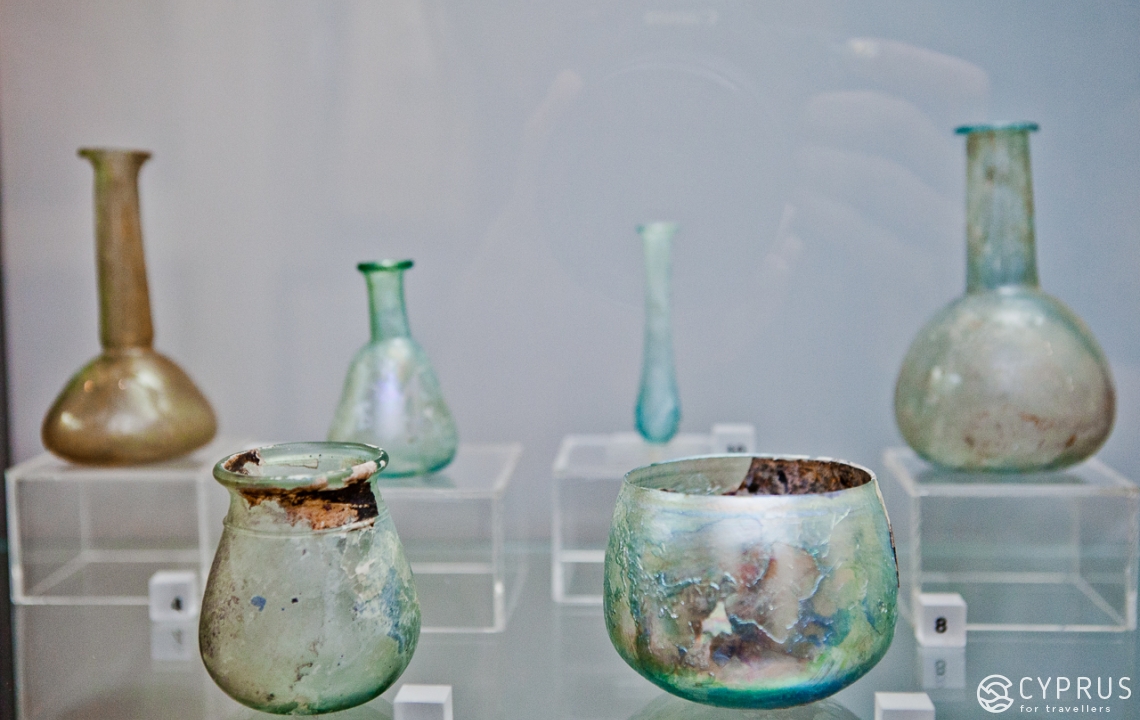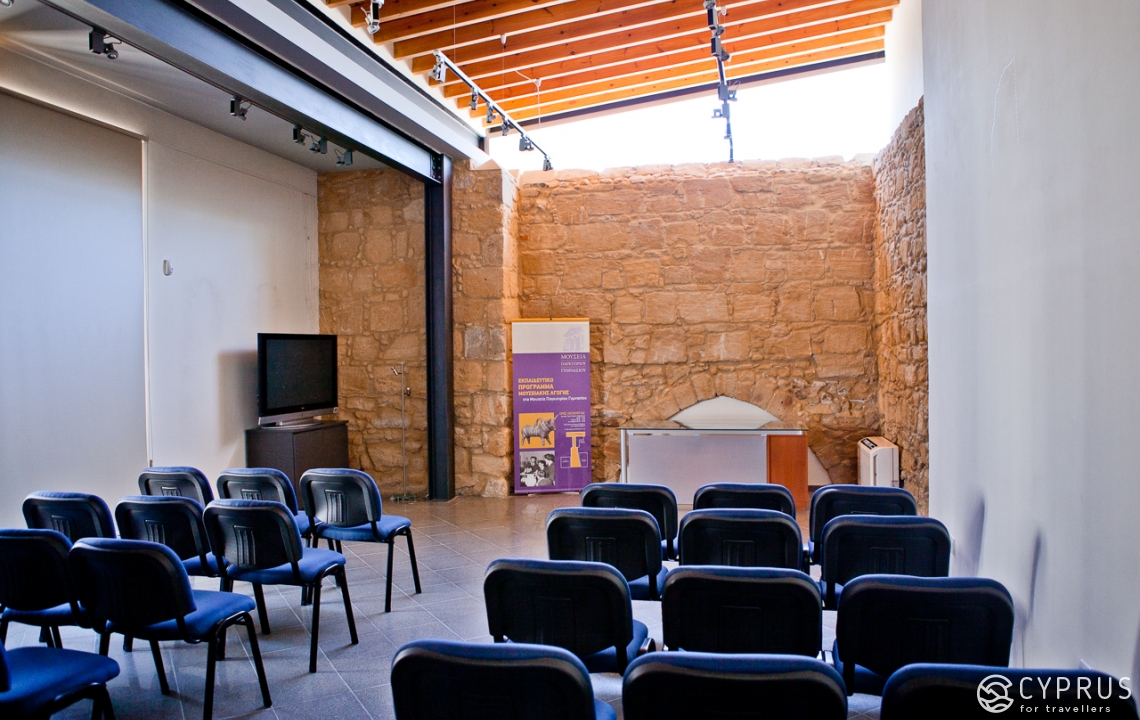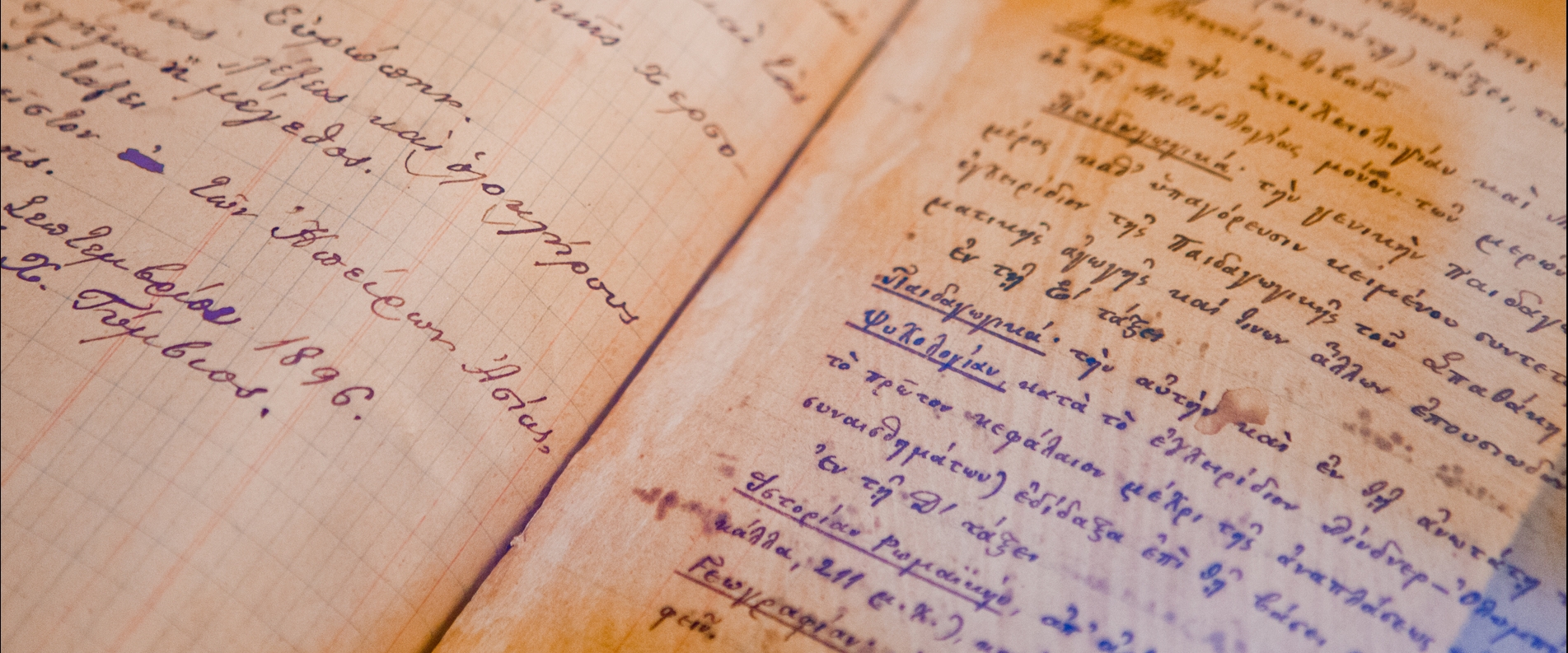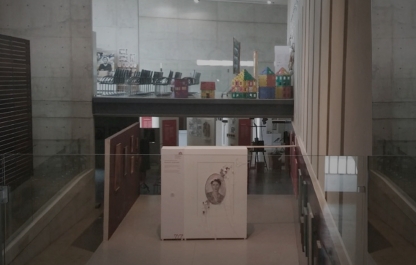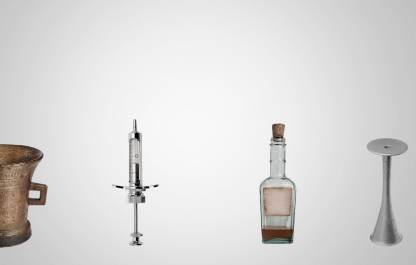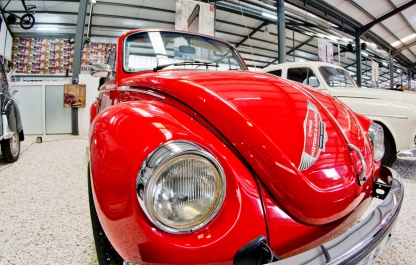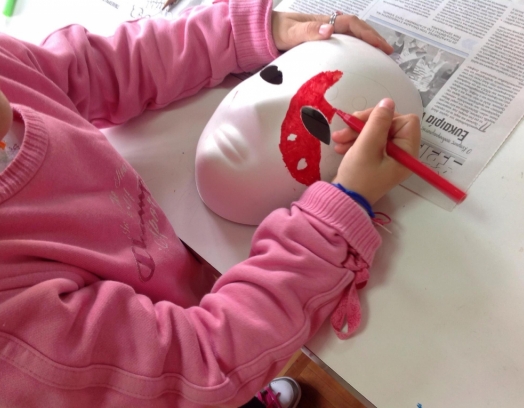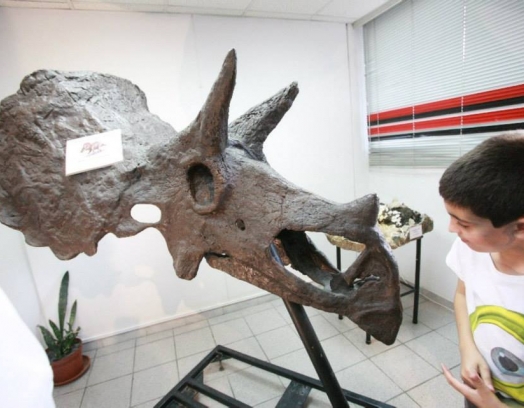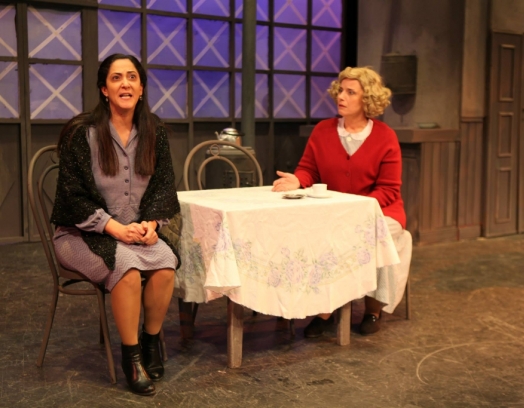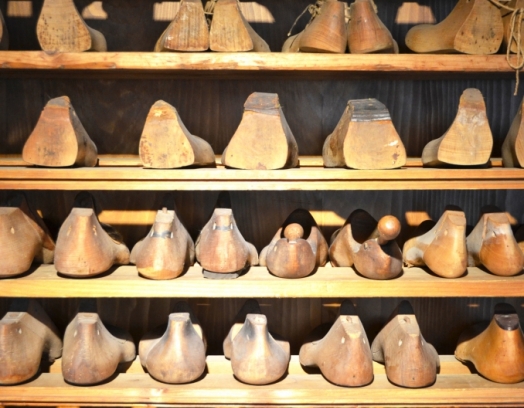One of the pearls of the Old city: the museum was the first gymnasium to be built on the island and houses a unique collection. Standing before you is no ordinary school. These 12 halls represent the fruit of persistent labour, a creative idea taking flight, and most importantly, a love for one’s country and its people, as well as concern for its future. Through its exhibits, which have been used to educate several generations of students, one can study the history of the island’s society, as well as learn about its culture and intellectual life right up to the present day. Many well-known people from Cyprus are graduates of the Pancyprian gymnasium, with multiple relics here linked to their names.
Opened in May 2007, the museum is located inside seven adjoining buildings — formerly private houses — which have been renovated and modernised. It is included in the architectural study complex, which is comprised as such: Gymnasium — Library (built in 1949) — Museum. The limestone masonry, typical of such a traditional development, the arks, the “Italian” marble staircase and the inner courtyard of this architectural complex have all been enhanced with metal supports, as well as contemporary designs and with fixes made to their internal layouts. For the tempted visitor, the museum’s halls arguably look rather classical and traditional, no doubt due to its contents and their nature. However, the guided lighting, the glass cases installed for viewing the exhibits, as well as the references and information stands present, — will ensure you do not get lost amongst the many artefacts, works and inventions of the teachers and students.
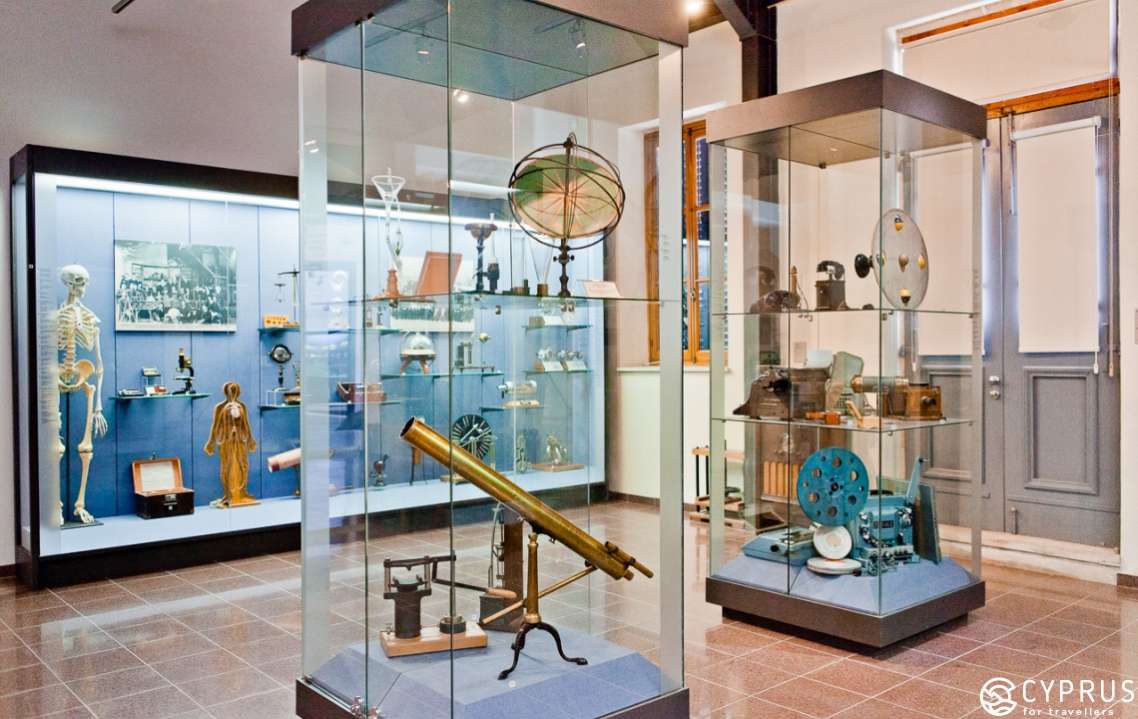
The two-floor layout of the exhibition begins with a description of the school’s history and the life of its students. The first floor displays the following sections: Collections and Events relating to the Arts, Natural History, The National Struggle and specific dates. At the start of the exhibition, an interactive panel has been installed for visitors and its main intended audience — school children. Here you can see a layout of the halls and information illustrating the exhibits.
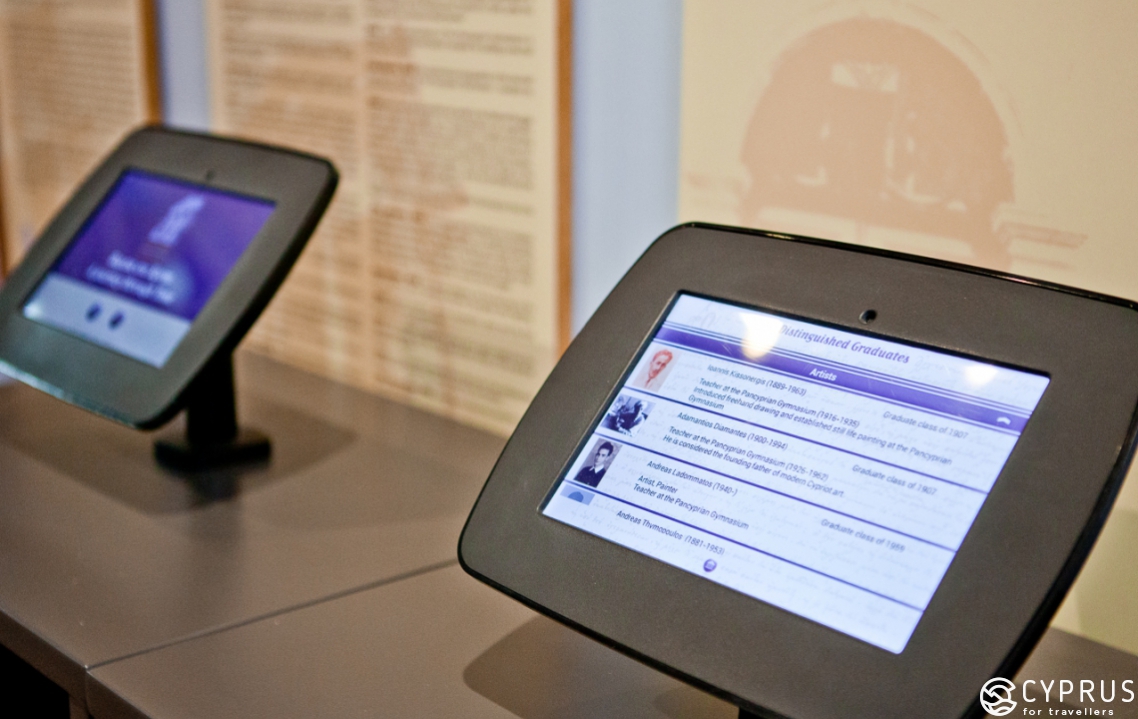
The second floor is dedicated to the archaeological collection and also features a numismatics display, historical weaponry and geographical maps.
A slight digression: The Pancyprian gymnasium was inspired by the Hellenistic historical school, founded in 1812 by the Cypriot Archbishop Kyprianos. The Cypriot gymnasium followed the example of Greece’s practices: until 1821, Cypriot schools were under the Archbishop’s jurisdiction. Changes then occurred, with the largest of these reforms dating back to 1878, when the government claimed authority over the education system. Alongside this, a trend had arisen of unifying the lands and developing a national idea (for which the University of Athens became a conduit) — an advanced notion for that time. This was accomplished, first and foremost, through education and culture.
However, the reality of indigenous life in Cyprus made its own adjustments: indeed, to this day, there has never been an institute of higher education on the island. As such, the emergence of the Pancyprian gymnasium dates back to 1893 (it was the equivalent of a modern day institution of secondary education. Thanks to a school time table, which has survived to the present day, we have gained insight into which subjects were taught: history, pedagogy, psychology, cartography, grammar…
Mikhalis Fantanos, an employee of the museum, explains:
“It was a very difficult job, because of one peculiar feature concerning each school, especially the Greek ones: Who were the teachers in them? Naturally, they were priests, and the schools themselves, first and foremost, educated and trained future clergymen. The main subjects were also associated with Orthodoxy, — here we can observe a link with the long-standing classical tradition of teaching. The gymnasium received financial support for its activity from three main sources: the Church, donations from fellow citizens and financial aid from the Cypriot diaspora in Egypt, which, as a foreign trader, was known for its wealth”.
Did you know: the five-year budget for the country’s first institute of general education totalled 5,000 pounds.
The programme of study lasted six years. A division for girls was opened in 1934, however, the level of teaching and the subjects taught to the young female pupils strongly differed from the “boys’” counterpart. They were mainly taught how to be “good spouses and housewives”.
Soon, in the 1940s, departments of Commerce and Foreign Languages were added. Later, secondary schools appeared in Limassol and Famagousta.
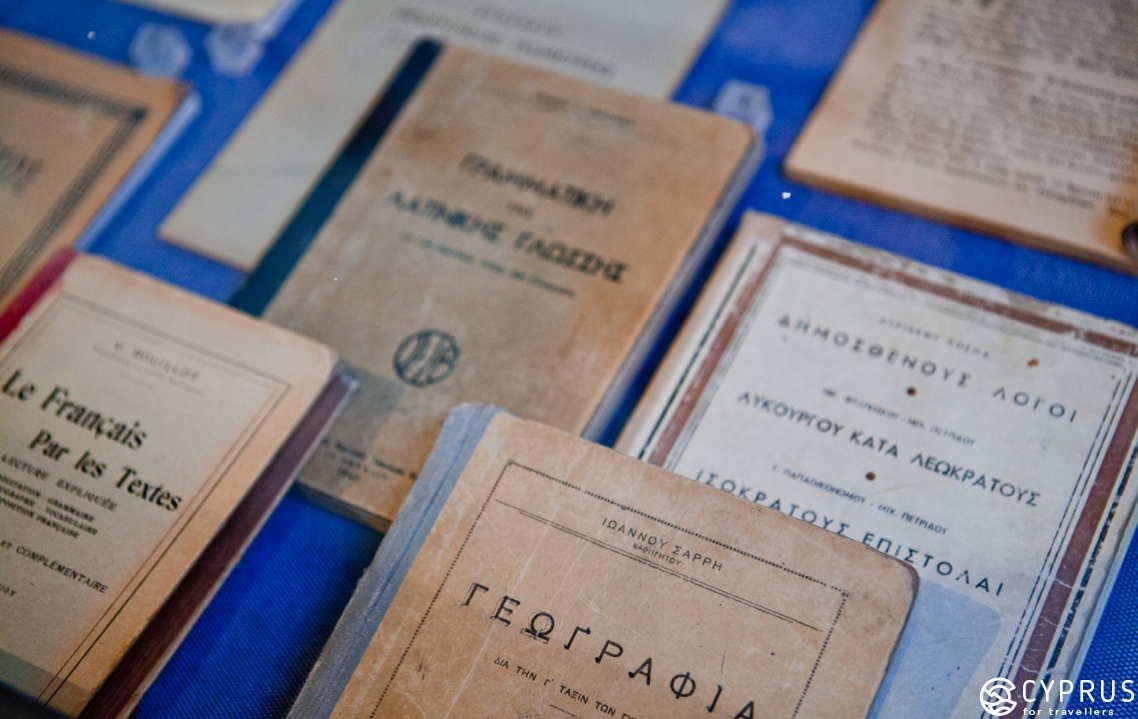
It must be said that such a state of affairs very much suited the British administration: after all, until the 1930s, the existing rulers weren’t interested in developing or supporting the indigenous population’s middle class, its schools or local intellectuals, scientists included… The British rulers in Cyprus were only interested in primary education, which received their support.
In 1893, when the Greek consul in Cyprus, K. Panugrias, donated his personal collection of fossils to the gymnasium, the idea to create the museum emerged. Other various artefacts were later acquired by the gymnasium, together with further donations, — which constantly replenished the collection for educating future generations of youngsters. The items which you now encounter in the display cases are the results of teachers’ painstaking work to create visual aids, but most importantly, — the desire for their students to have more diverse educational materials at their disposal.
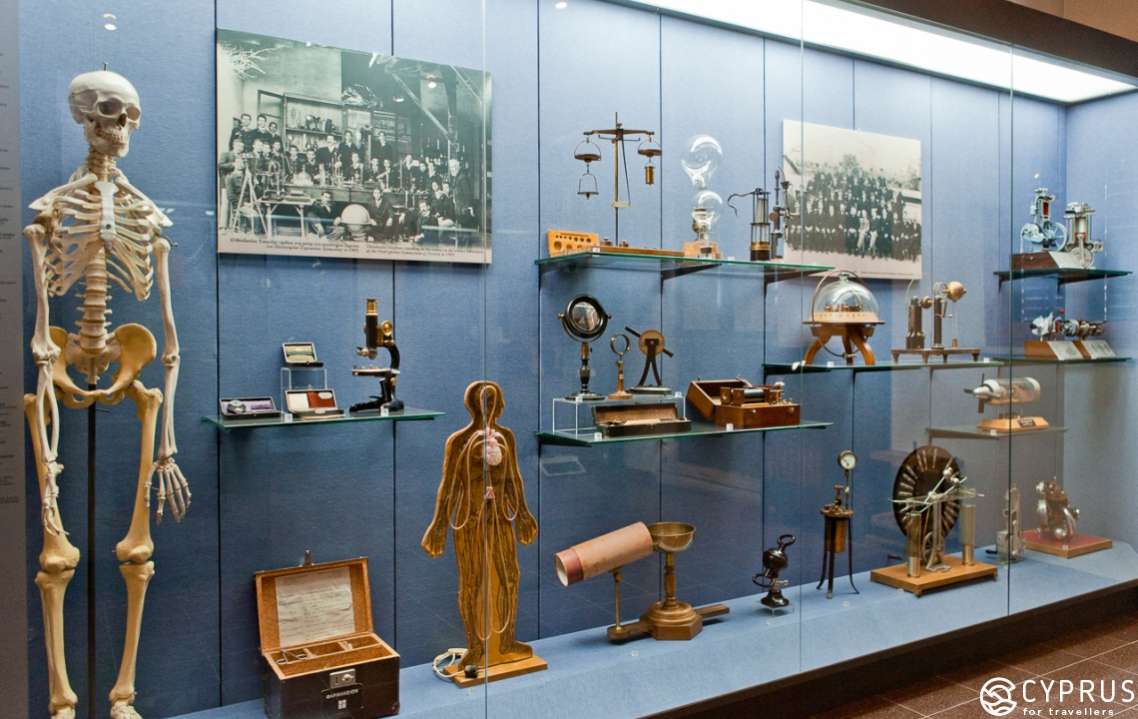
The museum has received substantial material support from patrons of the arts, benefactors, and its former graduates.
For instance, graduates in 1943 collected 4,000 Cypriot pounds to replenish the museum’s funds.
In truth, the chair of professors has not only collected each new piece but has also scientifically processed, documented and classified them.
Since 1935, the Pancyprian gymnasium has become what is referred to as a “three in one”: a school, a cultural centre and a training academy for teaching staff. This coincided with the moment the English decided to change the existing policies: to limit the role of Greek schools in society. They simultaneously opened a Turkish school in affiliation with the Omerie mosque (the former Cathedral of Saint Sophia in Nicosia). At the end of the Second World War, archaeological, numismatic, historical and natural science pieces, in addition to a folklore collection, were put on display in the basement rooms of the Severios library.
It was during this period specifically, when the post of director was occupied by Constantine Spiridakis (1936-1960), that a scientific approach to the exhibits was employed, allowing for the creation of the Archaeological Museum in the Pancyprian museum.
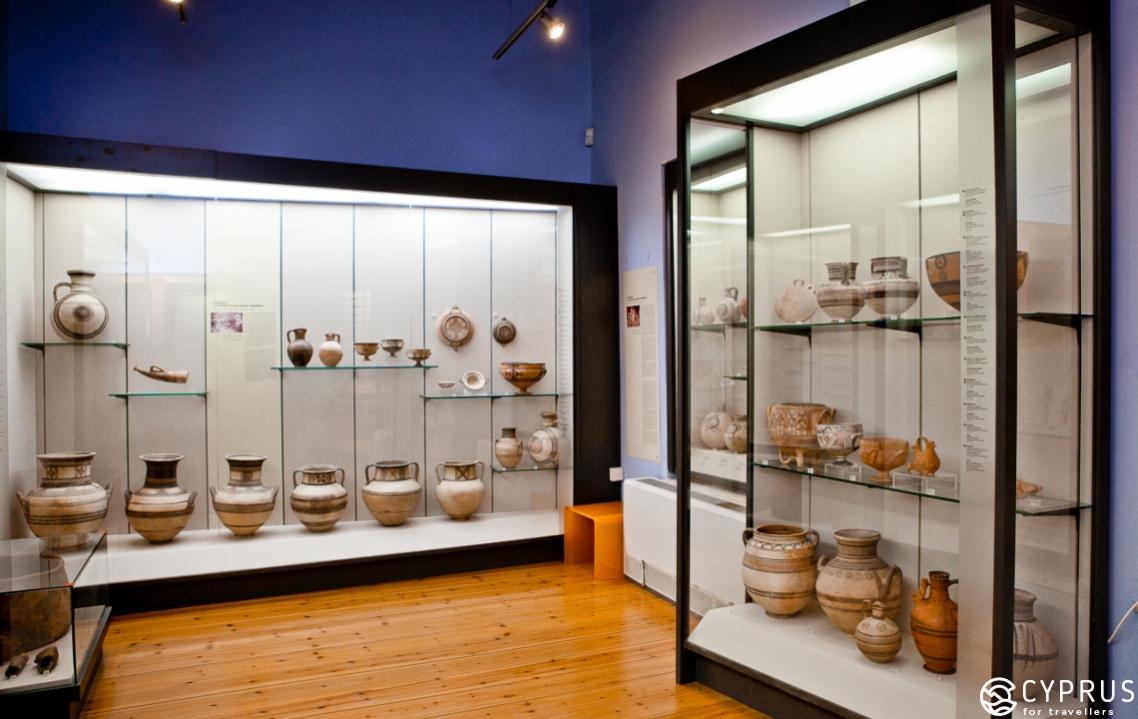
During the 1955 rebellion, organised by the National organisation of Cypriot fighters for independence (EOKA, 1955-59), the gymnasium ceased to be merely a school. Its teachers had begun writing newspaper articles in support of the fight, people were taking part in street protests and demonstrations, — in a word, they were actively backing the struggle of their fellow citizens. As a result, in 1956, this focal point of rebel activity was closed for a year by the British authorities. Several exhibits in the display cases are dedicated to this period.
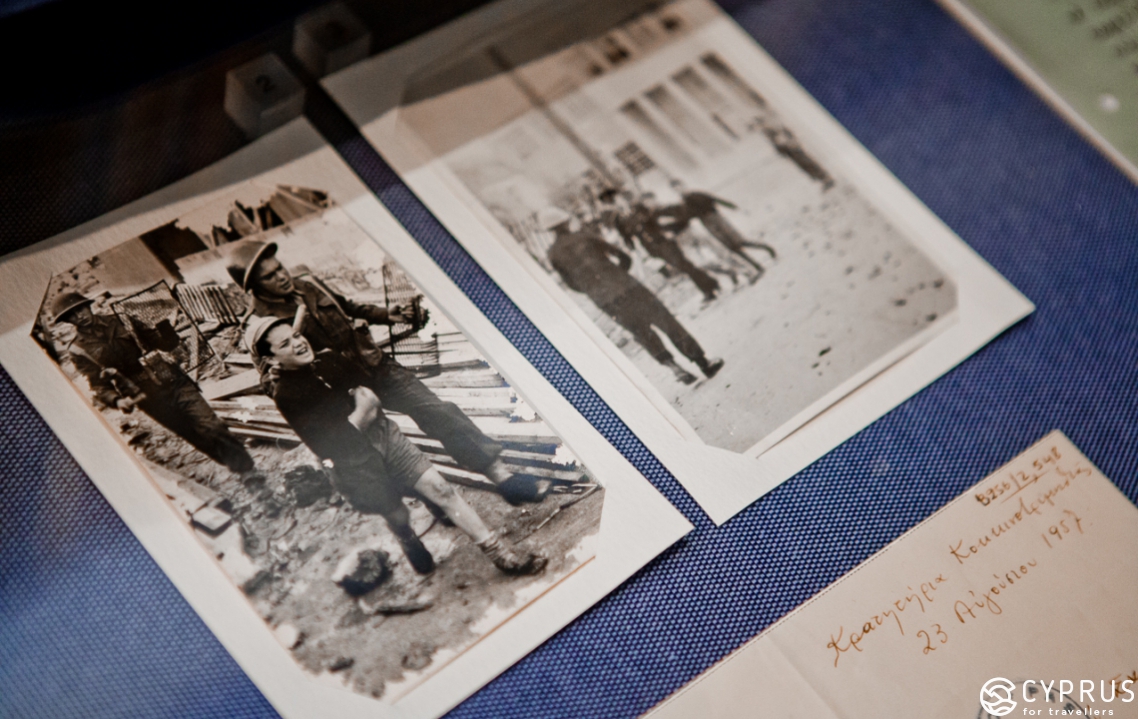
Despite the eventual coup d’état and subsequent occupation of the northern territories by Turkish troops in 1974, any possible pillaging of the museum’s valuables managed to be avoided.
By 1993, the museum had already celebrated its centenary, and its collections were significantly reorganised and enriched with new entries, thanks to the leadership initiative of Iorgos Hadzhikostis. Thus, the collection’s pieces were now displayed in 5 of the gymnasium’s halls, acting as a Museum illustrating the institute’s history.
It was only in 2007 that the museum appeared in a new location with a modern appearance, which adhered to international museum standards. This was owing to the hard work put into classifying the exhibits by St. Papantoniou, N. Nearhos and K. Miliotisapod, under the leadership of X. Ekkegis. Mikhalis leads us through the halls, introducing us to its rarities: “Once you’re here, you will understand immediately that our collections are very interesting”.
For instance, a unique model of a gothic sculpture — a carved, marble relief with an image of Jesus the Benedictory (13 A.D). Its large size, style and iconography are very impressive. Evidently, the sculpture once decorated the portal of a Catholic church, which has since been destroyed. The statue was discovered lying face down on an empty spot of ground: presumably, it had been knocked off its pedestal by the Venetians during the erection of fortifications around Nicosia. In one of the halls, you can see… a genuine, deep medieval stone well.
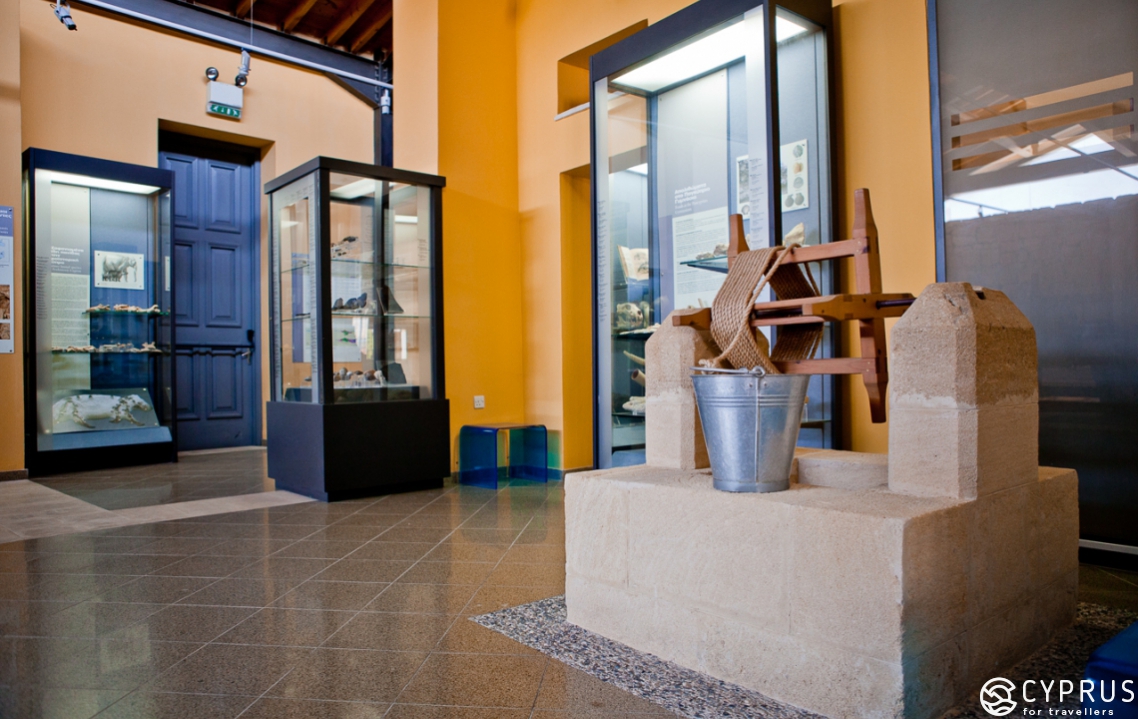
In addition to the Museum of Natural History, the collection of the Panycprian Gymnasium Museum houses a painting gallery, where works of art by Cypriot artists, professors and students of former years, are located. In years gone by, the school had an amazing choir and philharmonic orchestra, which participated in performances of Ancient Greek dramas and other theatrical works from famous ancient classical and European writers. A separate hall has been devoted to this sphere of school life, where photographs, theatre costumes, musical instruments, — and paintings from the past, are alive once more.
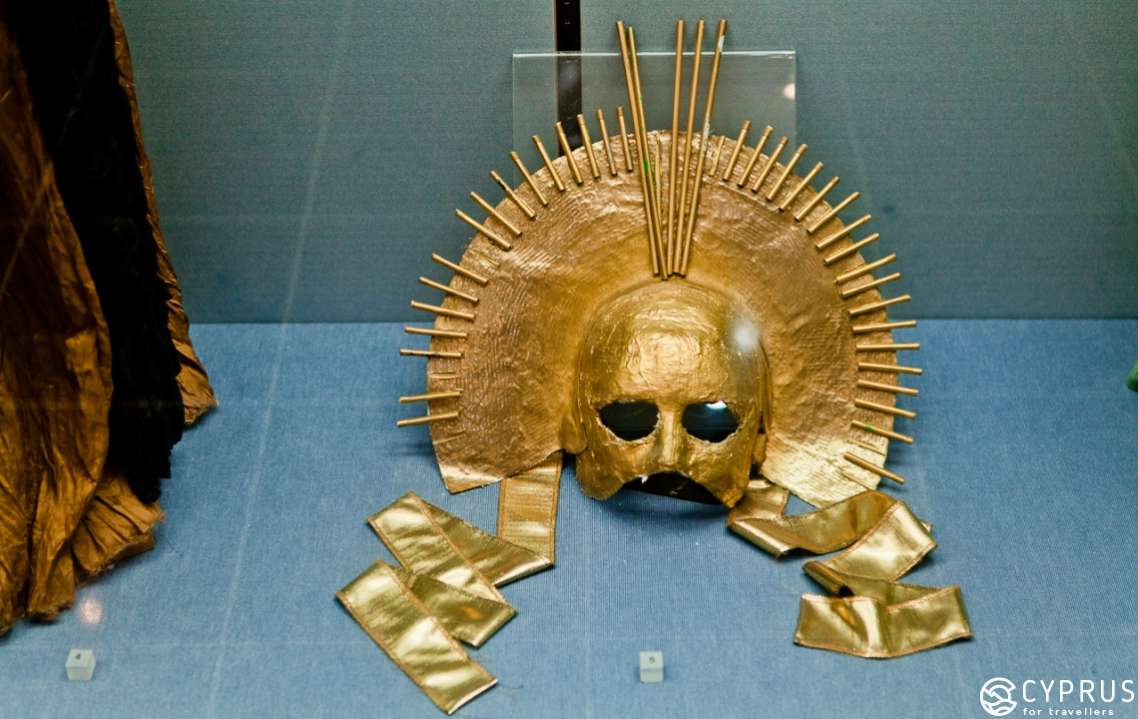
There are also exhibits illustrating students’ sporting achievements in national and international tournaments, as well as noted contributions made by teachers towards modernising (and developing) various types of sport in Cyprus. Here you can see photos and prizes from the 1932 and 1936 Summer Olympic games, in which graduates of the gymnasium participated”.
Interestingly: native Cypriots not only took part in sports contests over the years, but also in international conflicts, fighting voluntarily on the front line (the Greek revolution, The Balkan war, The Second World War) … and amongst their ranks were teachers and former students of the Pancyprian gymnasium — its heroic past in their faces.
“Here, in the museum, there is a small lecture hall and atrium, which, as well as being a popular spot for socialising, sometimes hosts various events in the evenings. In general, we offer different educational programmes for children and students, striving to provide visual expression and direct interaction with the museum pieces, which have high historical and artistic value. All of this really helps in grasping the material on a practical level: special excursions, lectures and programmes are also held here.
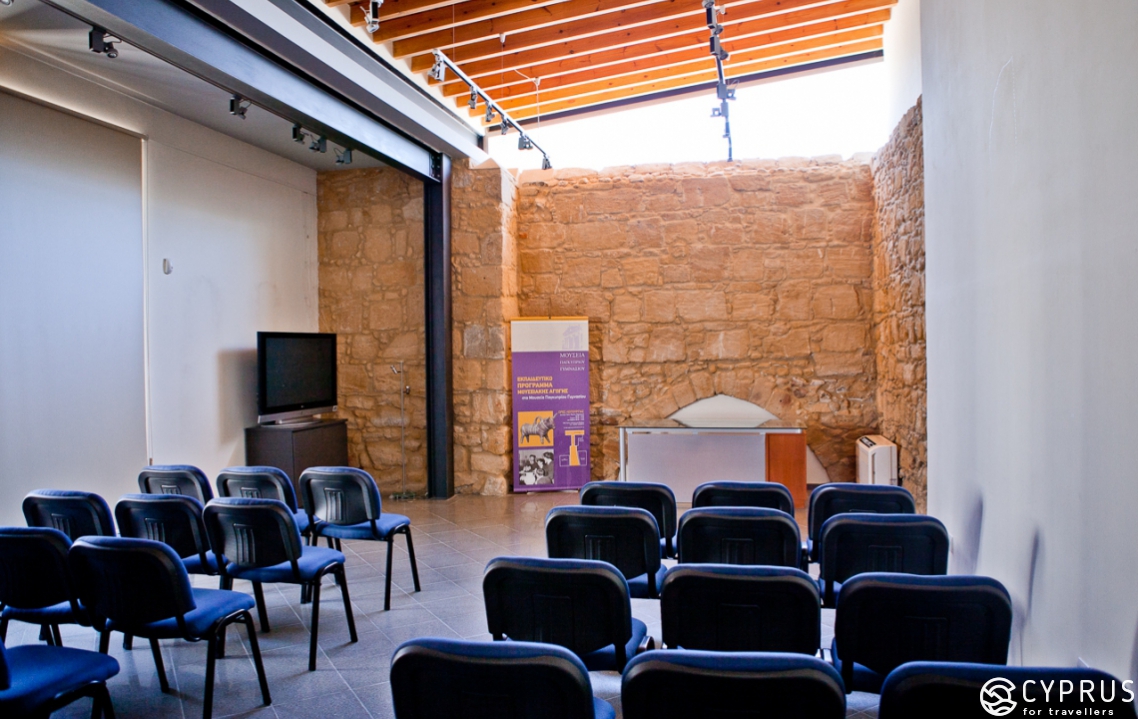
In the natural science section, your attention will be drawn to several intriguing fossils, including some brought from abroad; images of dwarf animal species which once inhabited Cyprus (dwarf elephants, hippos and others). The viewing cases for geological pieces display a collection of minerals, rocks and fossils, discovered both on the island and brought by travellers from Europe, Africa and Australia: pyrite, silicon, jasper, lava and fluorite — you name it, you’ll see it! Even samples of various natural dyes: such substances were used for class experiments at the gymnasium”.
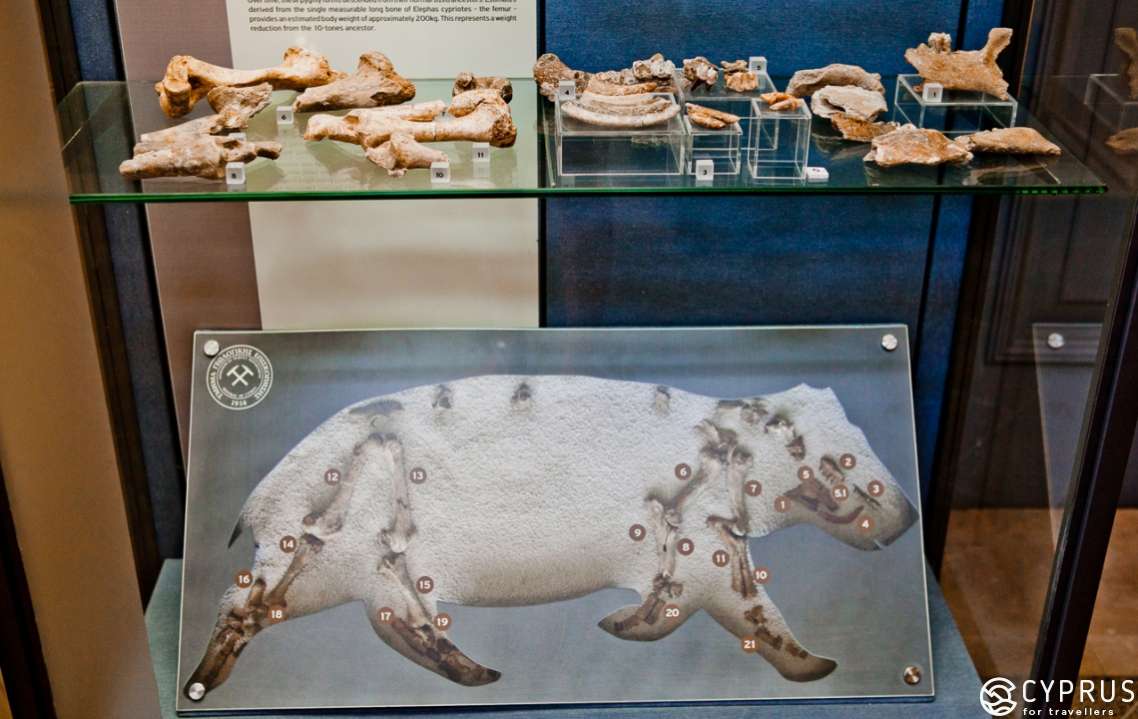
We move up to the second floor. The halls demonstrate the material history of Cyprus over many ages. Numismatics (coins from the Roman, Lusignan and Venetian eras), gems, antique ceramic ware, sculptures and chandelier glass, ancient weaponry (Cypriot, Greek and Balkan) and of course, geographical maps. Pieces from these sections and displays will arouse significant interest in connoisseurs and serious collectors.
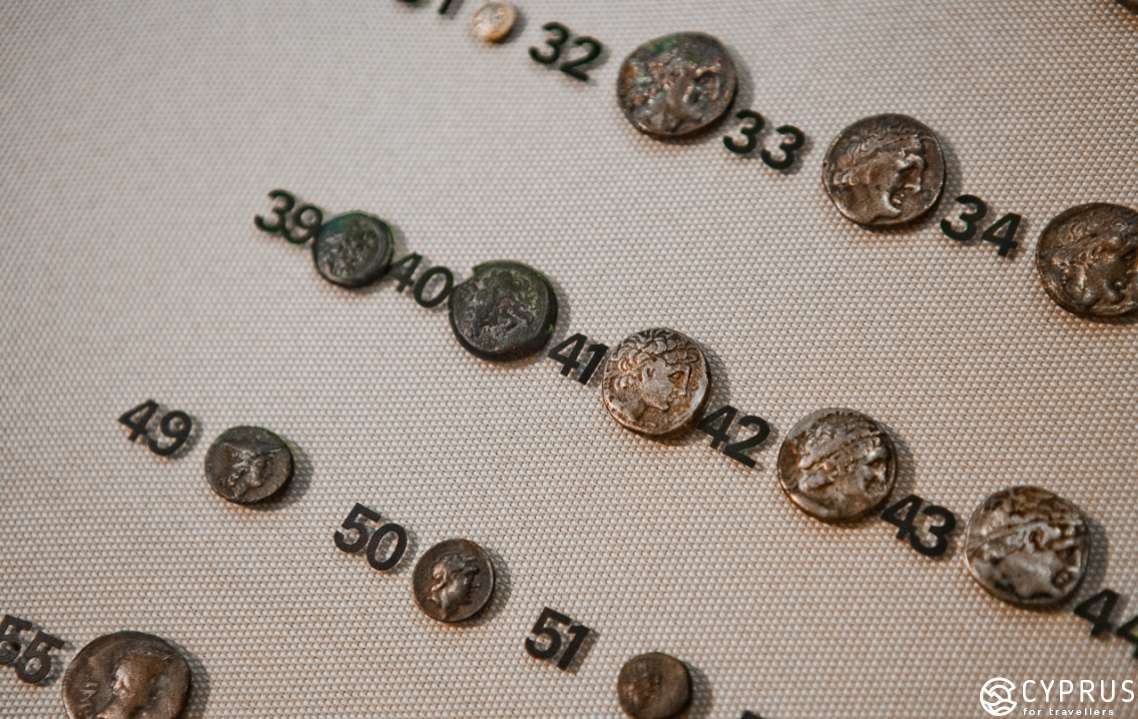
Note that the hall of old maps is a rare spot in Nicosia, where you can see maps of Cyprus which have been displayed for viewing purposes. Interestingly: in the old days, geographical maps were printed in one colour on sheets of white paper (nowadays we are used to seeing them in yellow, with their colour having changed in equal measure due to time and the sun’s rays, which they would often bask in). Printed maps were then coloured and decorated with intrinsic monograms and allegorical figures (in the Baroque era). This was the method of cartography in 18th century Cyprus.
The Europeans (amongst others), as we know, have always displayed a keen interest in Cyprus. And so you have before you an enormous map, fashioned by an English engineer over 2 years (on several sheets subsequently glued together): what is striking, aside from its scale, is the abundance of minute details, as well as the contour accuracy.
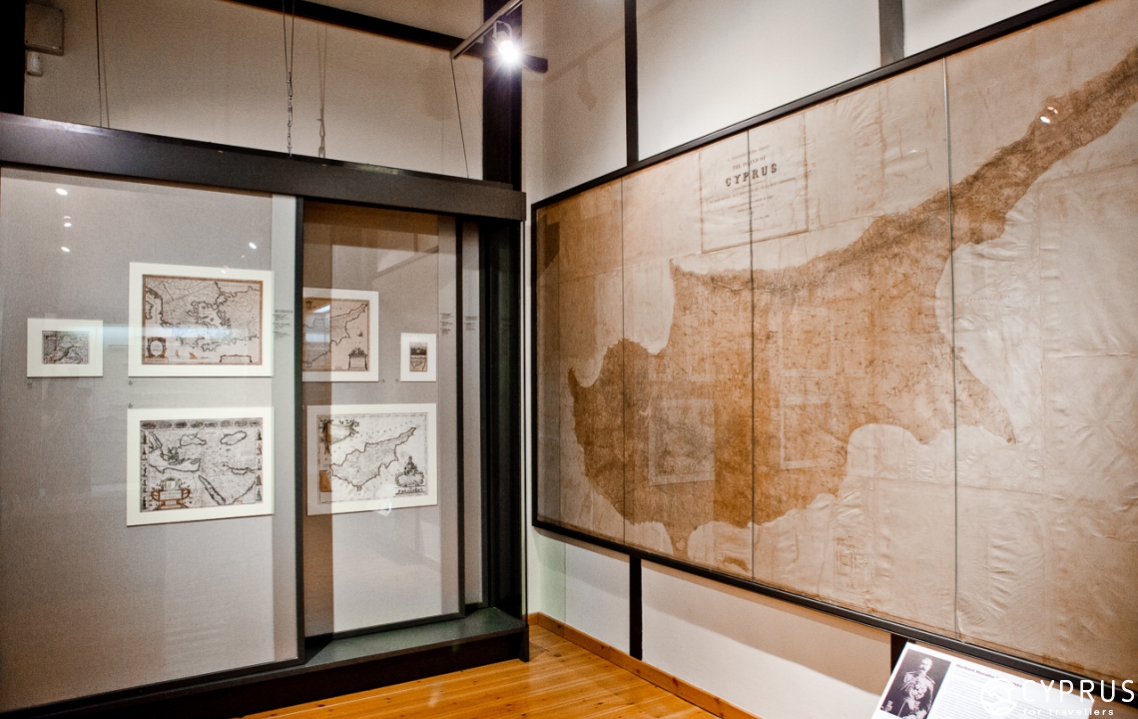
The museum and its employees are intent on further continuing to enrich the collection with new exhibits — something that provides the opportunity to conduct research, to study history (including that of secondary school education in Cyprus) and to assist the educational and disciplinary work of the Pancyprian Gymnasium.
As we parted ways, Mikhalis assured us: “We endeavour to keep the history of the Pancyprian gymnasium alive!”
Today we have learnt a lot of new facts and even experienced what it was like to be children again, having connected with the past: with events and people, who have gone for good, but whose dreams and aspirations remain, manifested in the museum’s pieces. We shall return here again to experience this genuine interest in the surrounding world and to get to know it all over again. In the quiet of the museum, we will be able to examine these treasures, which are being carefully preserved here for the sake of future generations.
Come along, and you mustn’t forget to bring the kids!
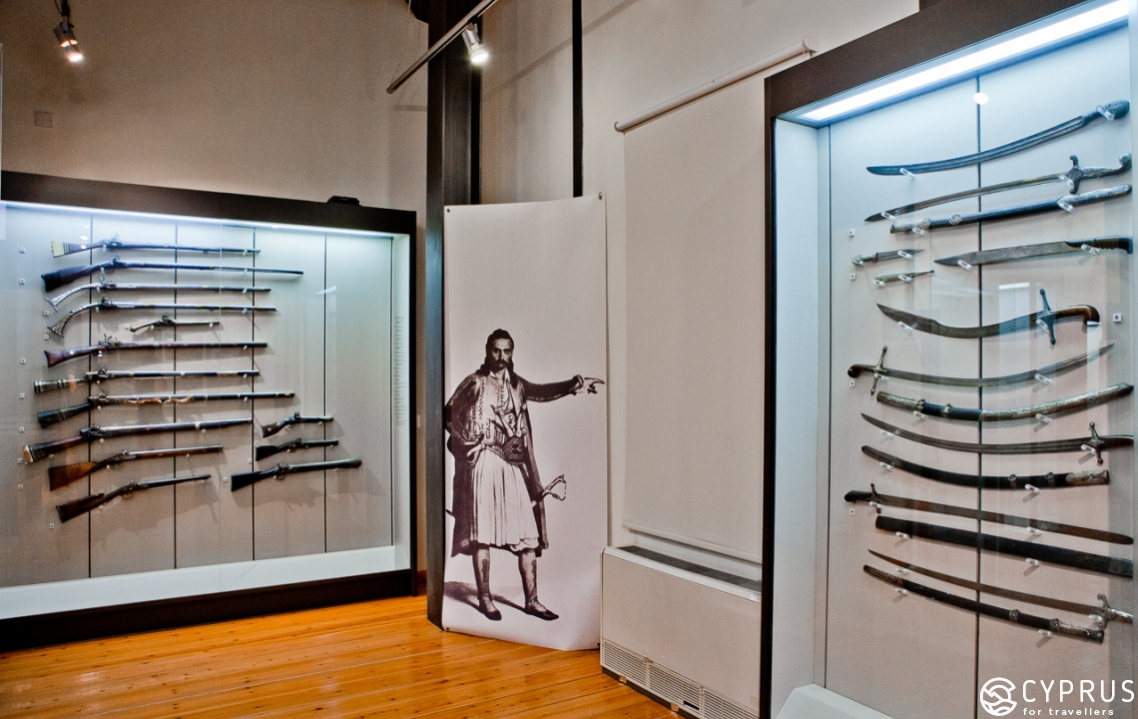
Address: the corner of Ioannou and Thiseos street (Old Nicosia). Opening Hours: on workdays (except Wednesday): 09:00 - 15:30, on Wednesdays: 09:00 - 17:00, on Saturdays: 09:00 - 13:00.
Themuseum is closed on Government declared holidays. Telephone: +357 22466014.
Email: pmmuseum@cytanet.com.cy.
Free entry.
See you soon!
